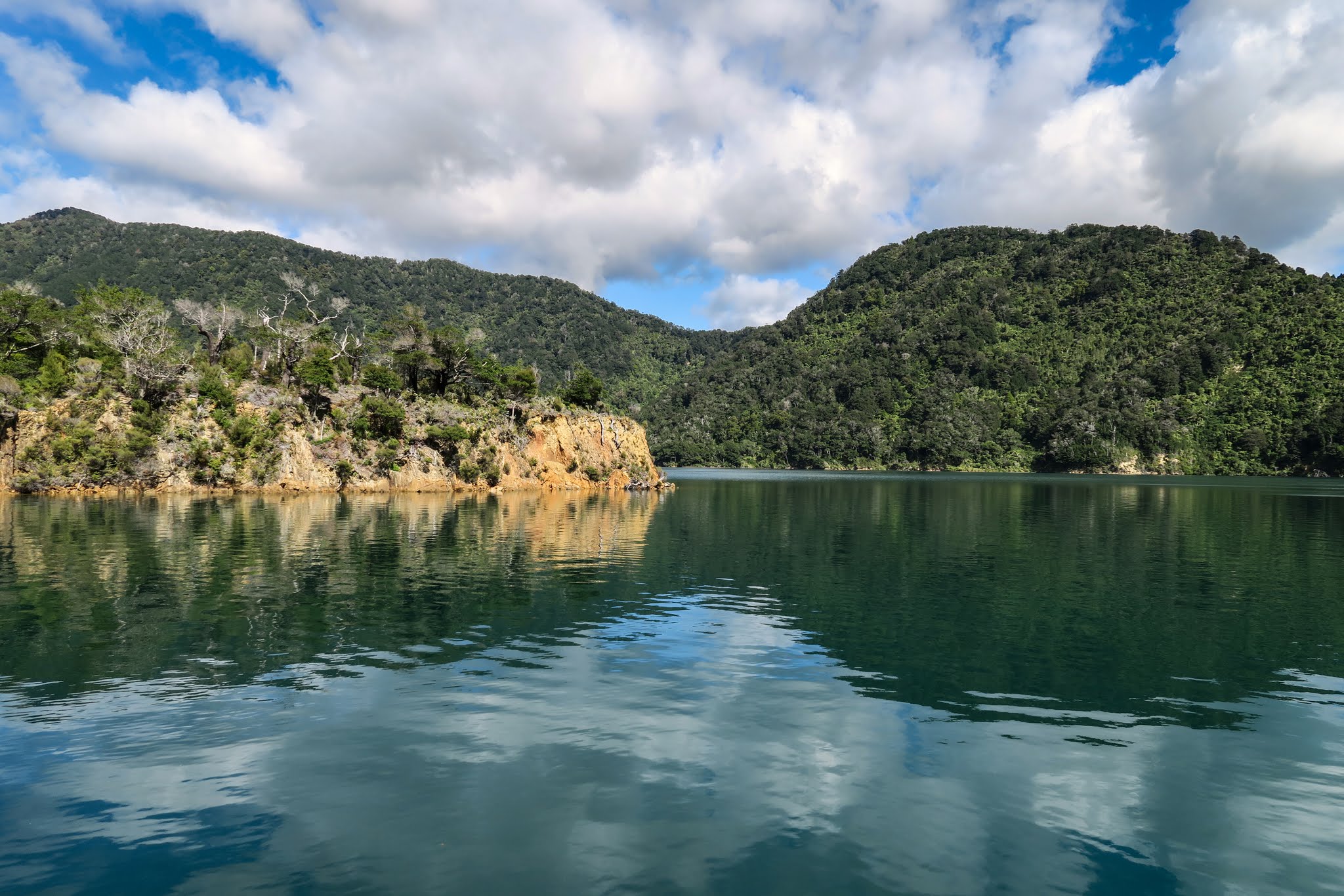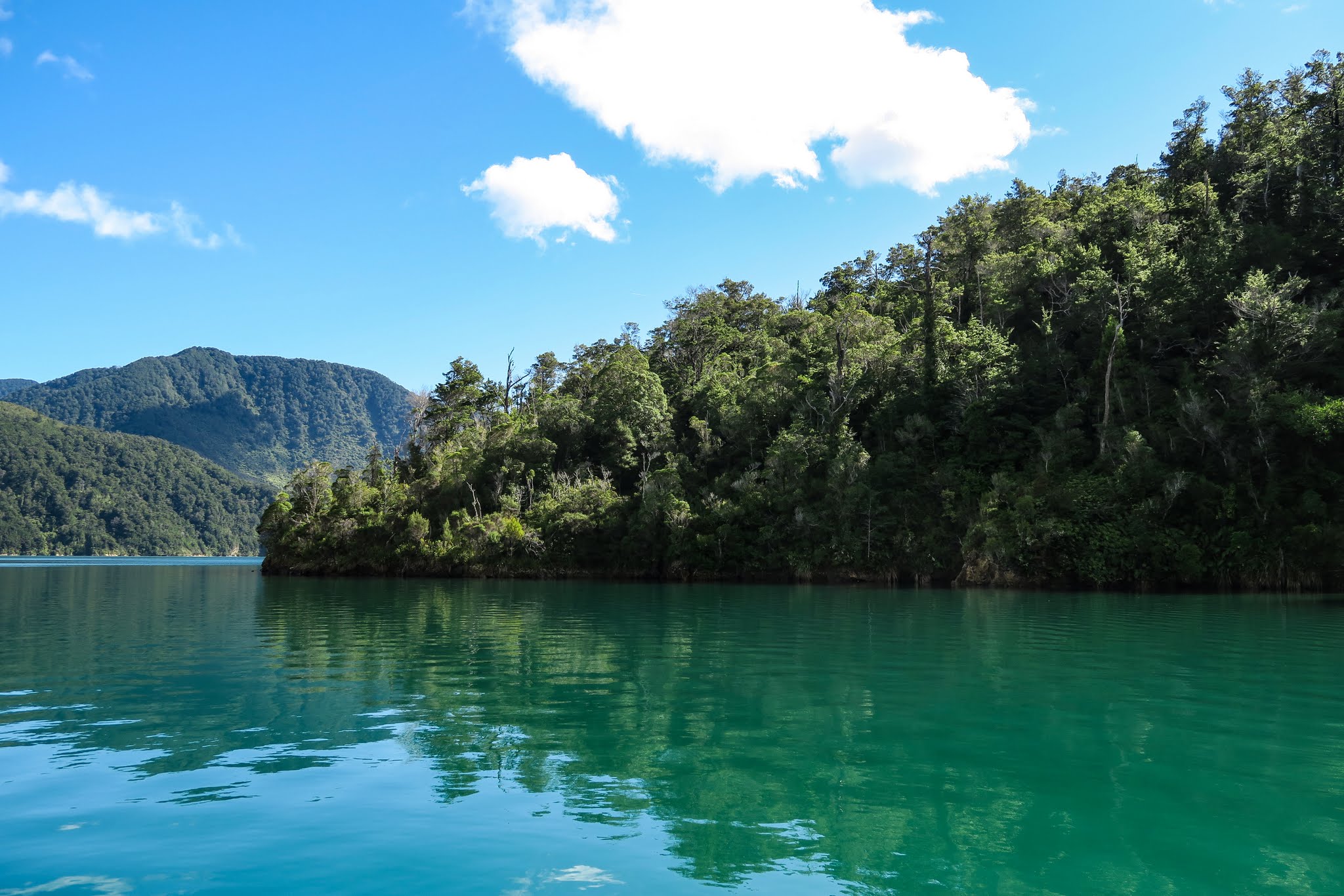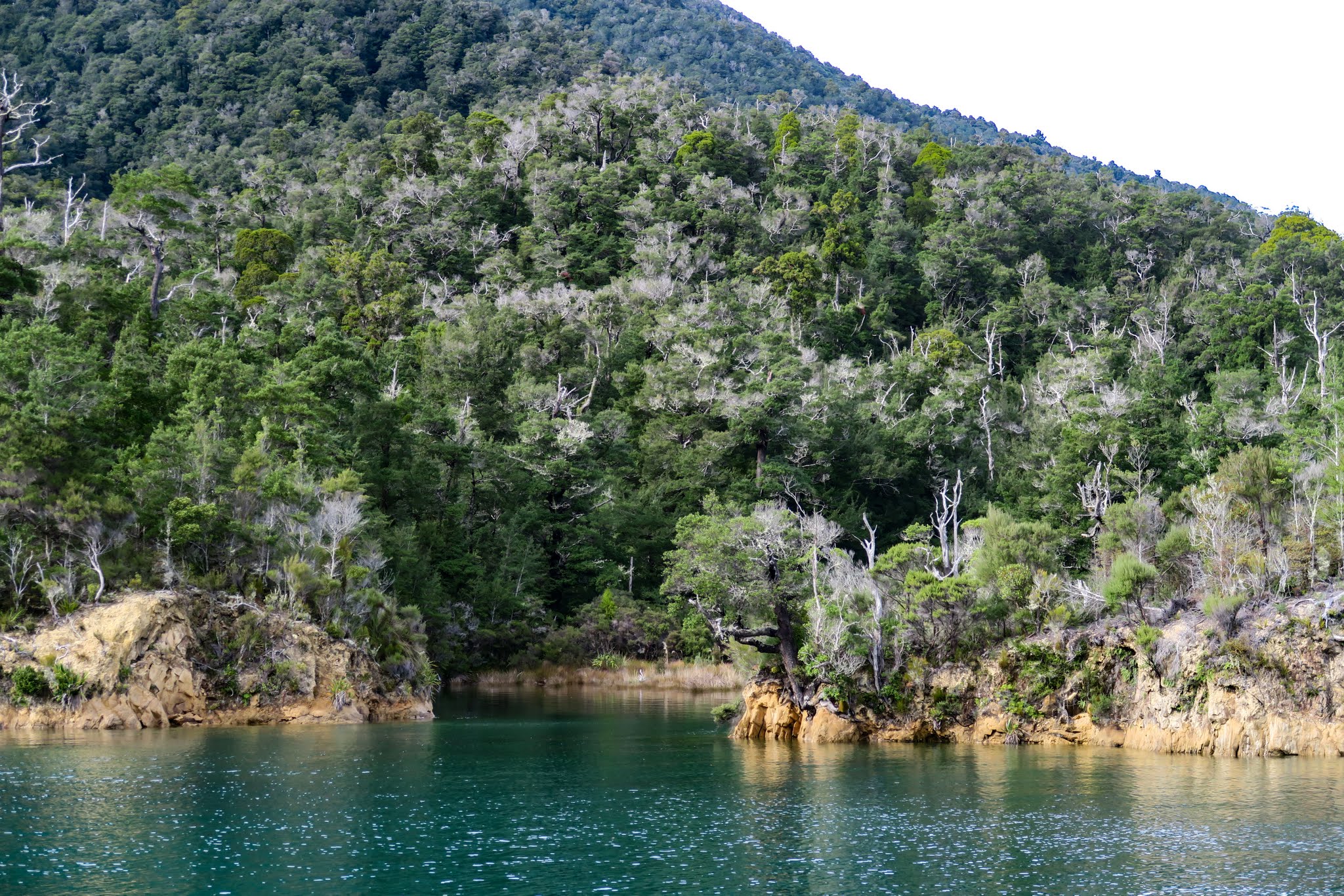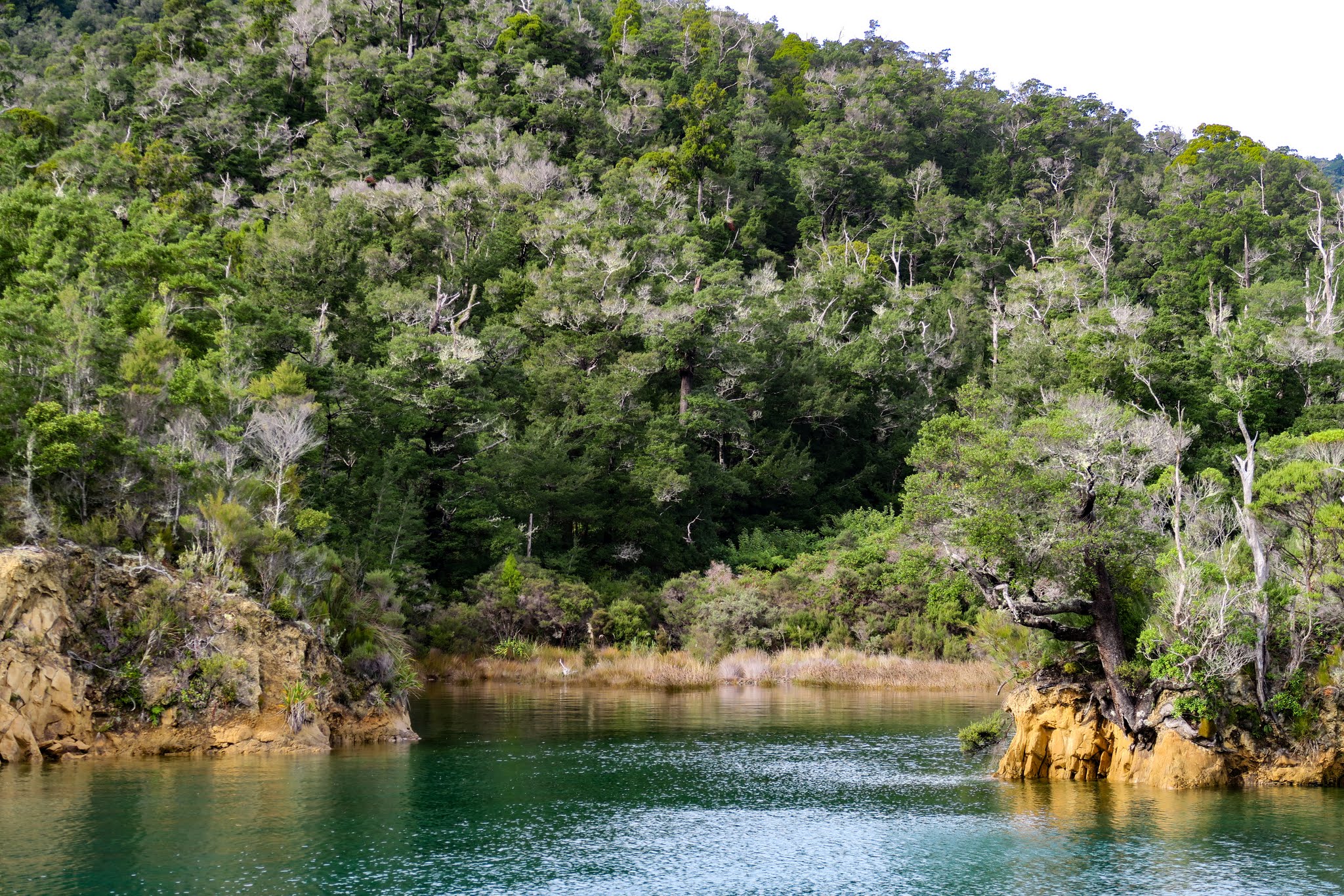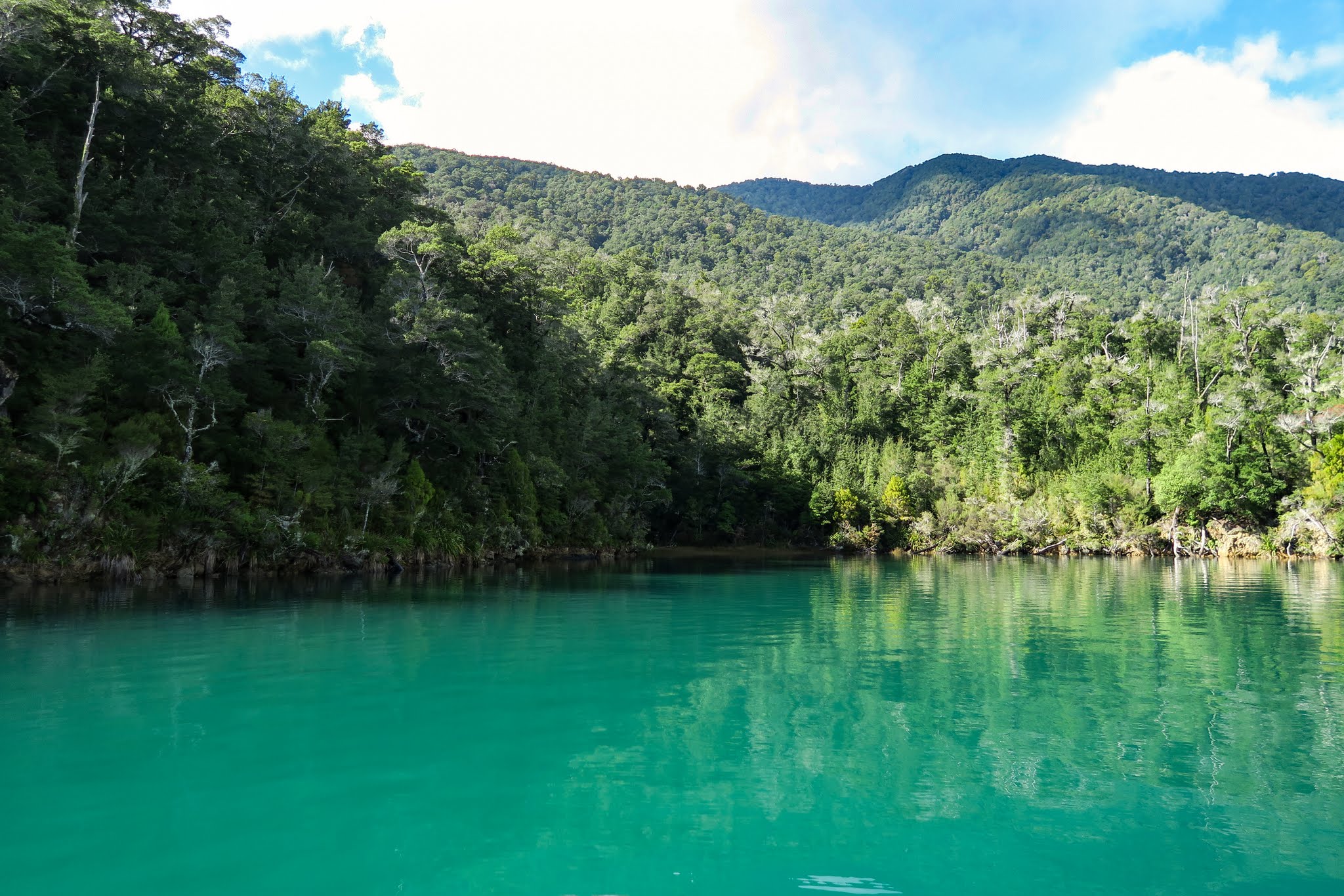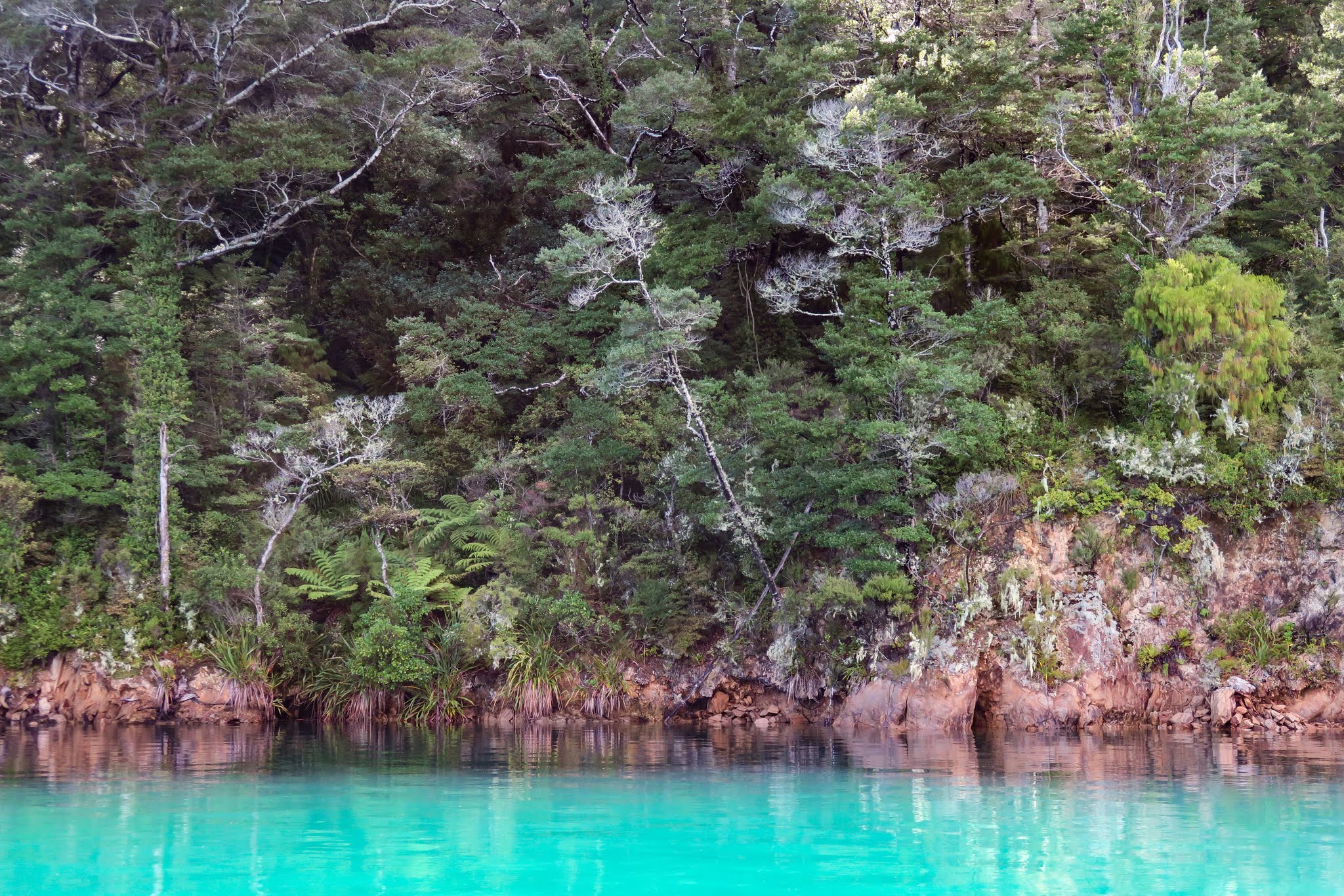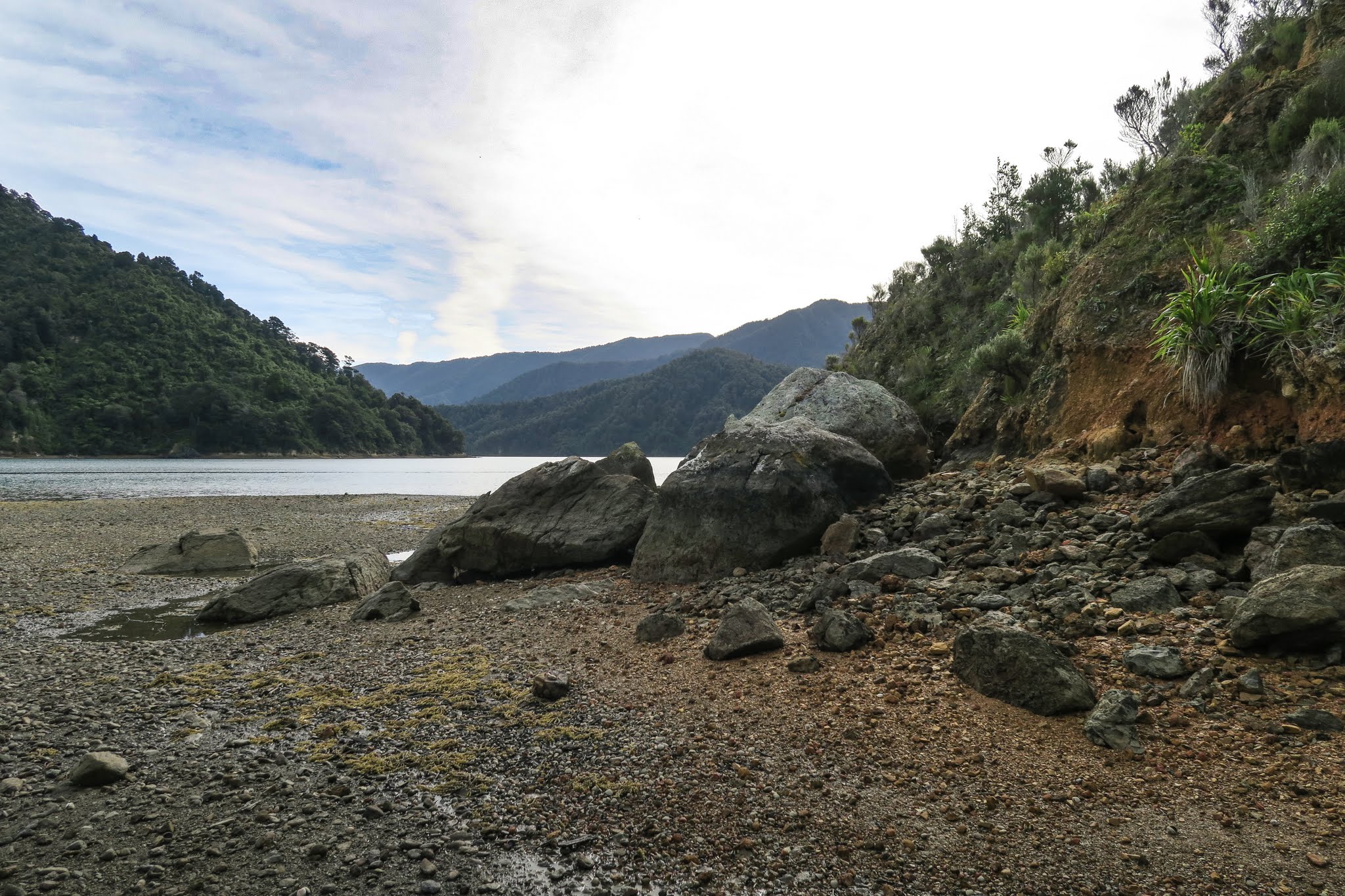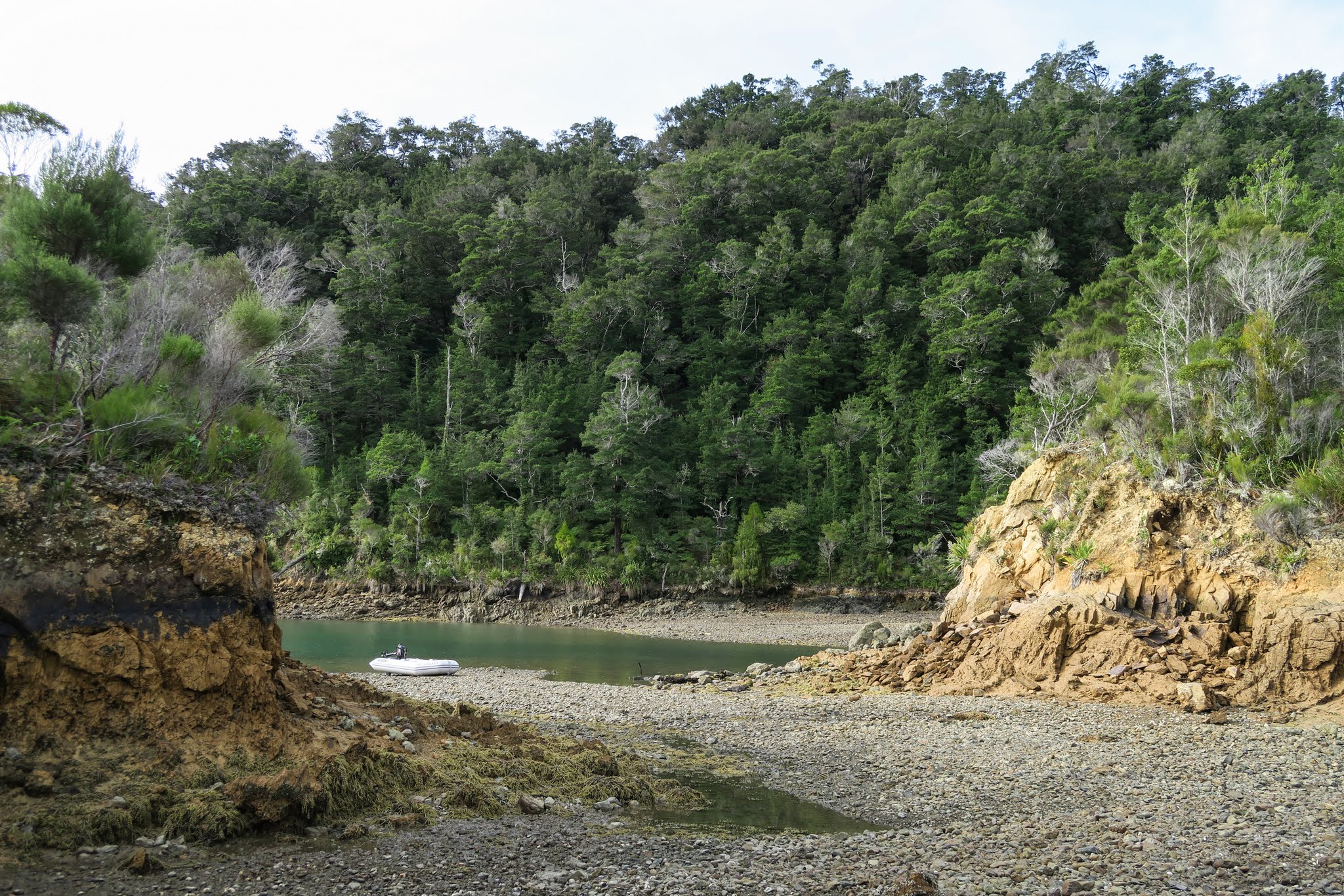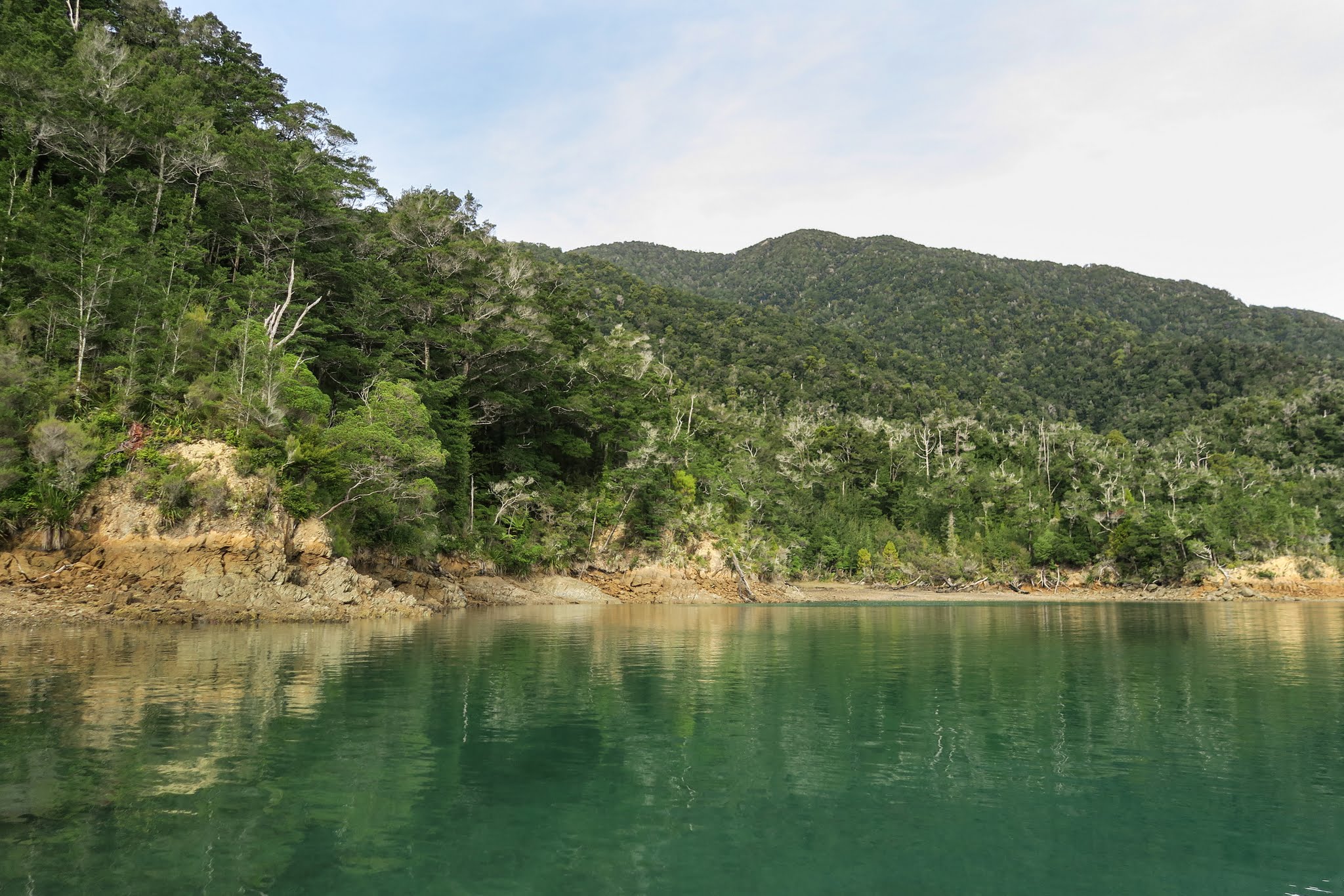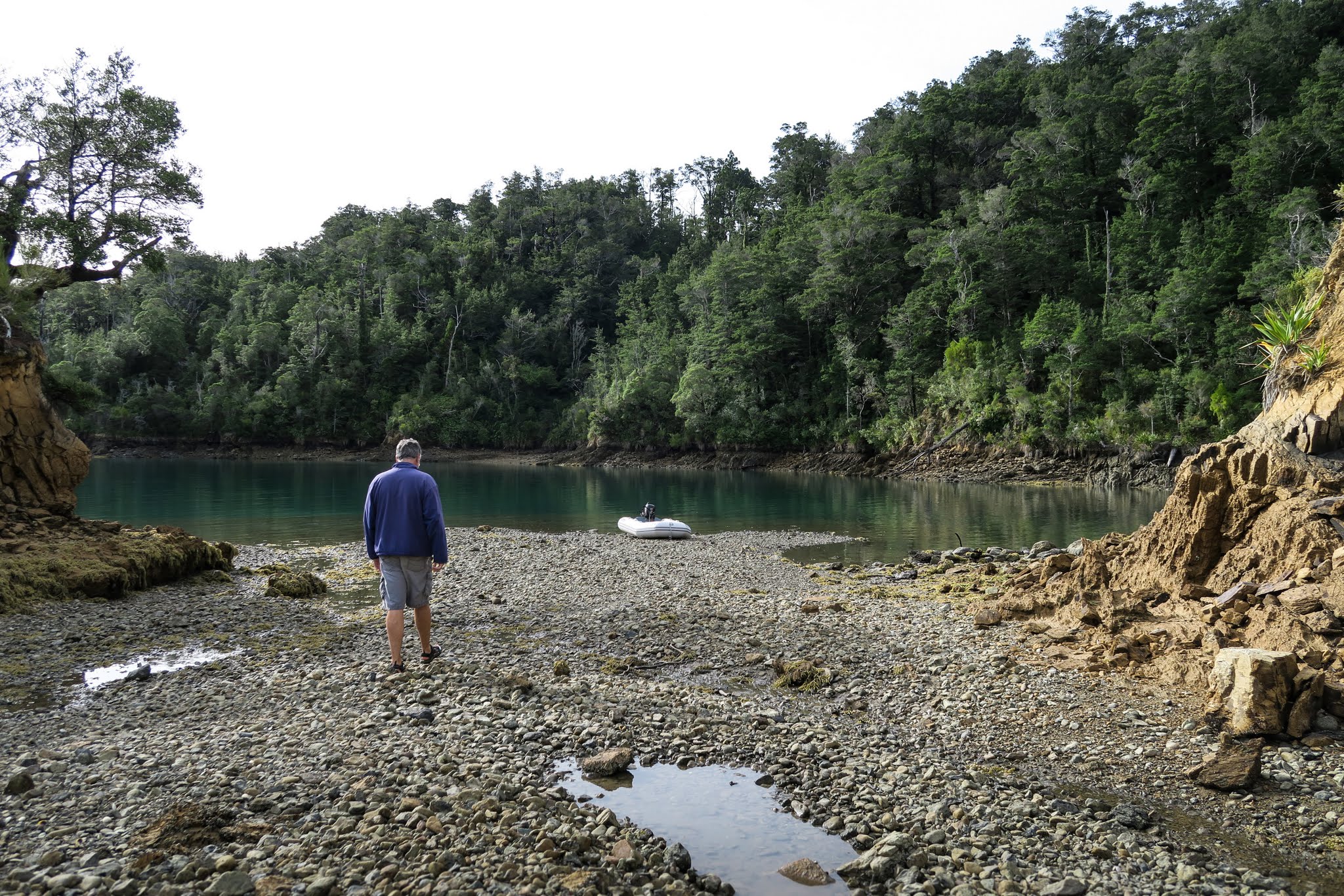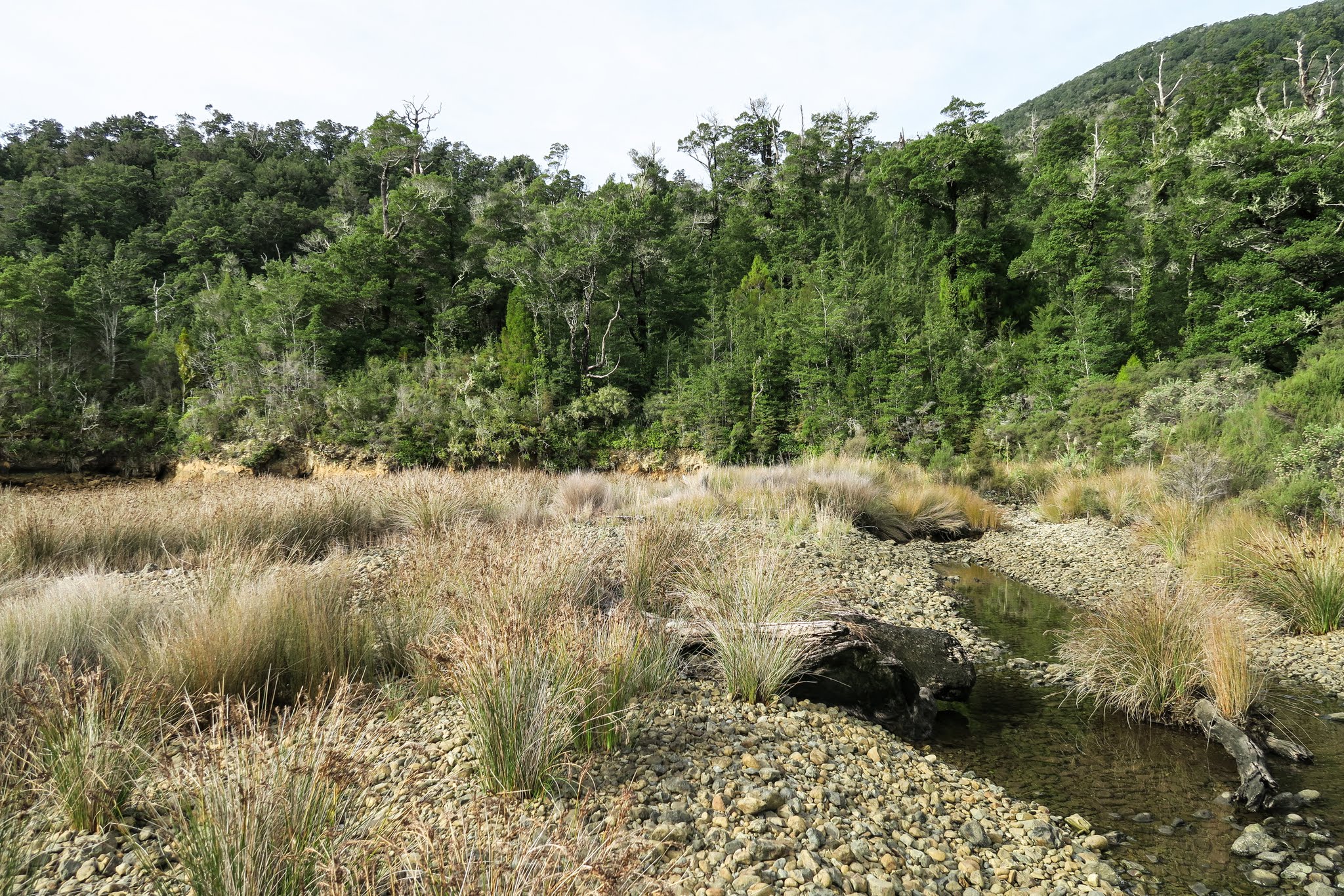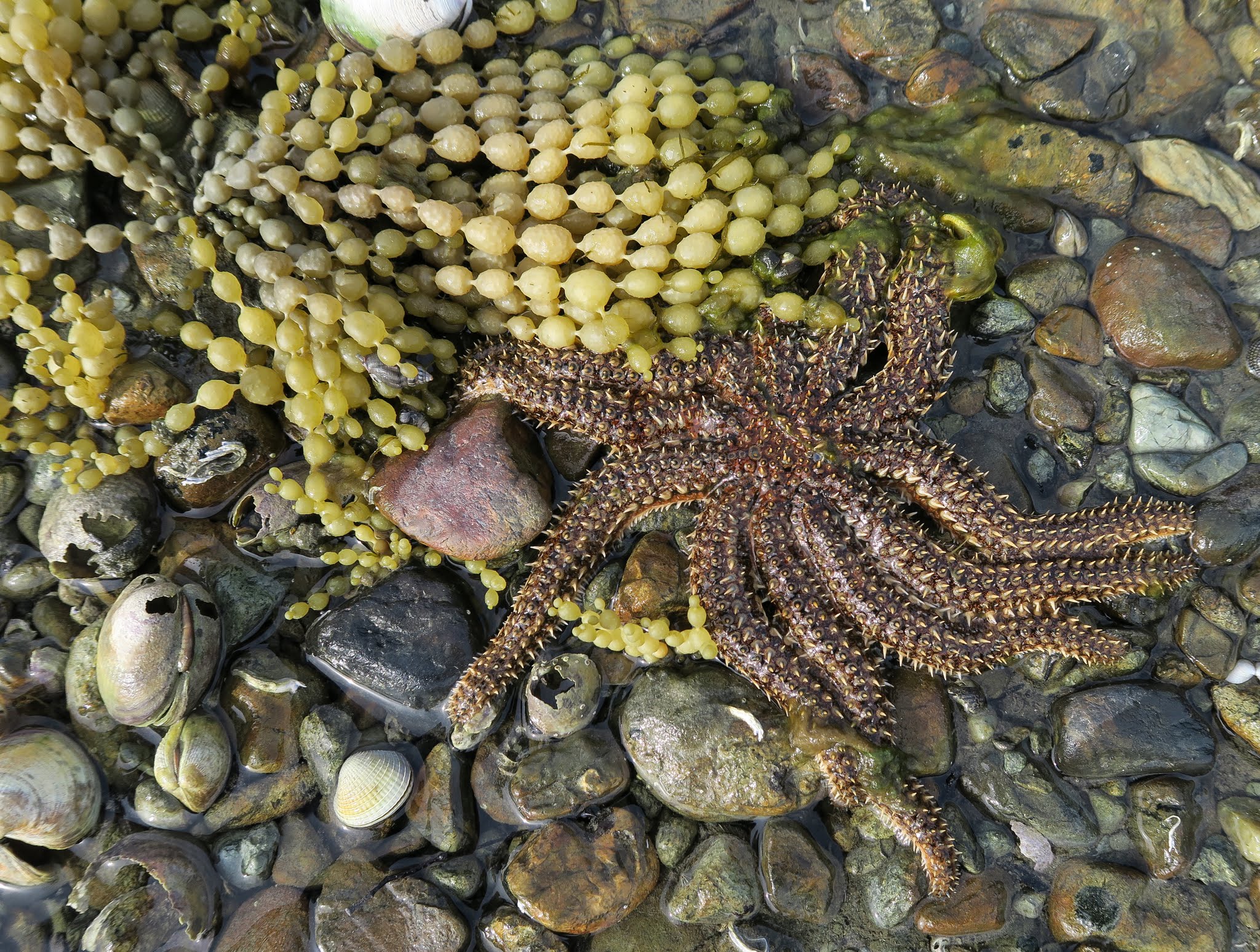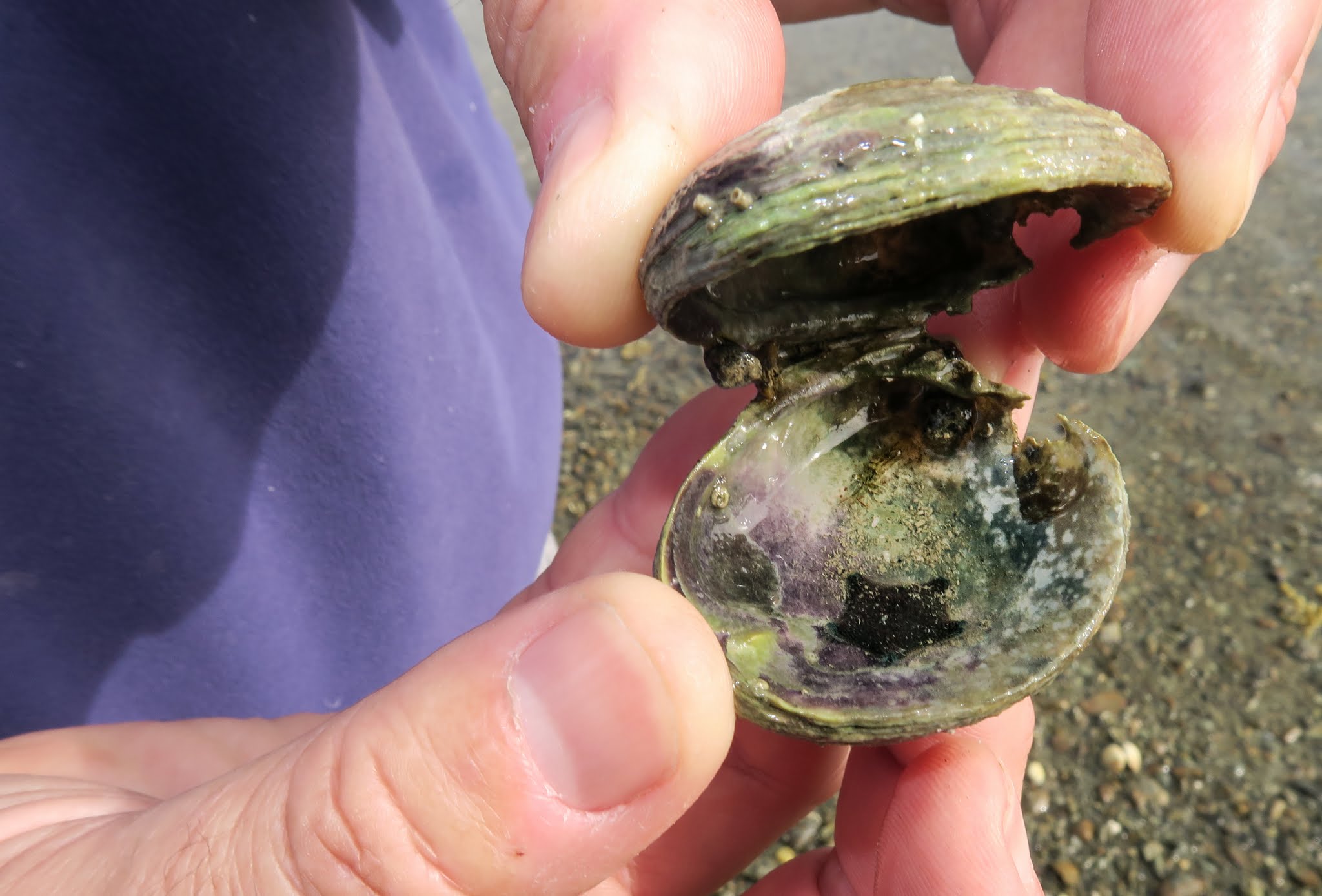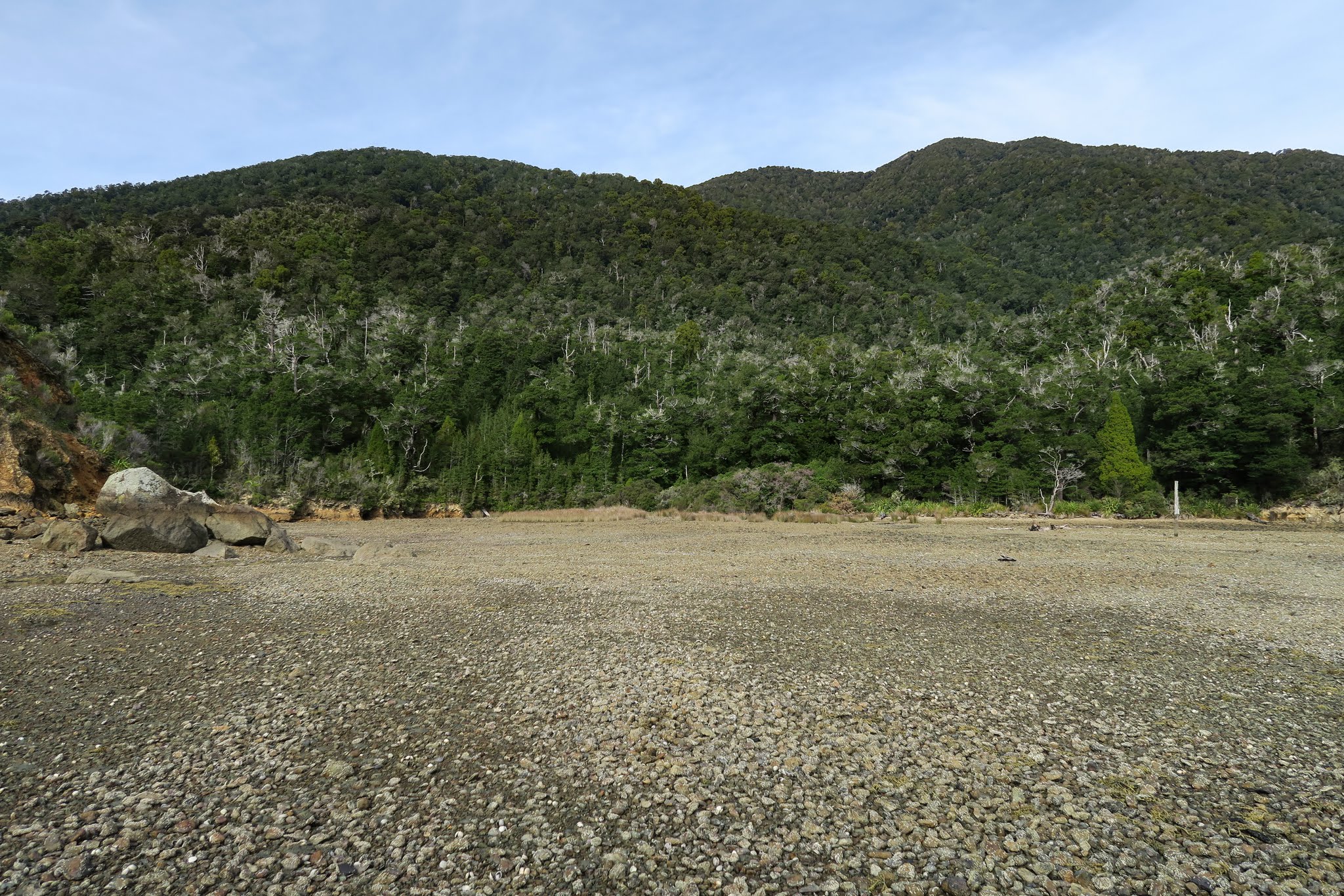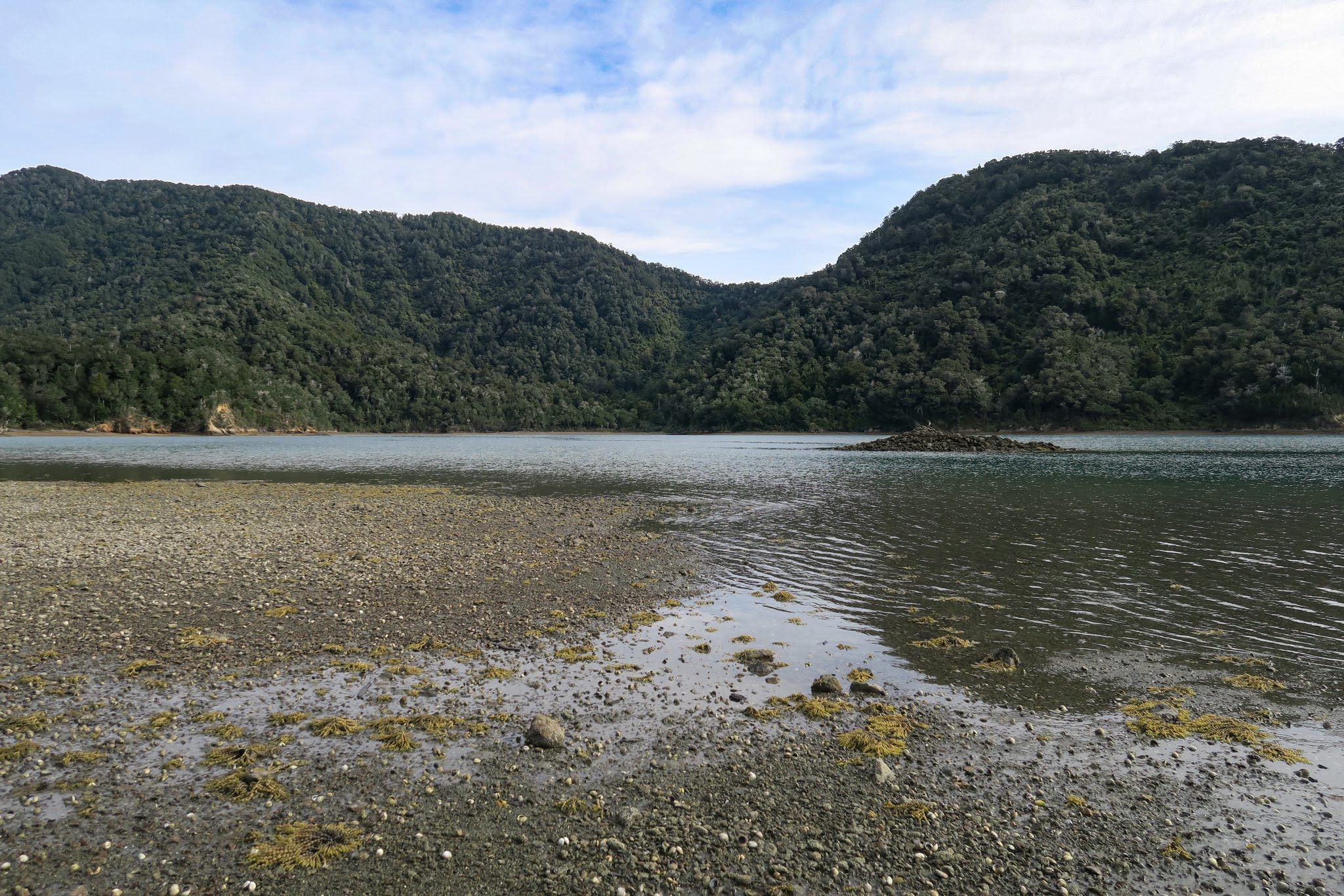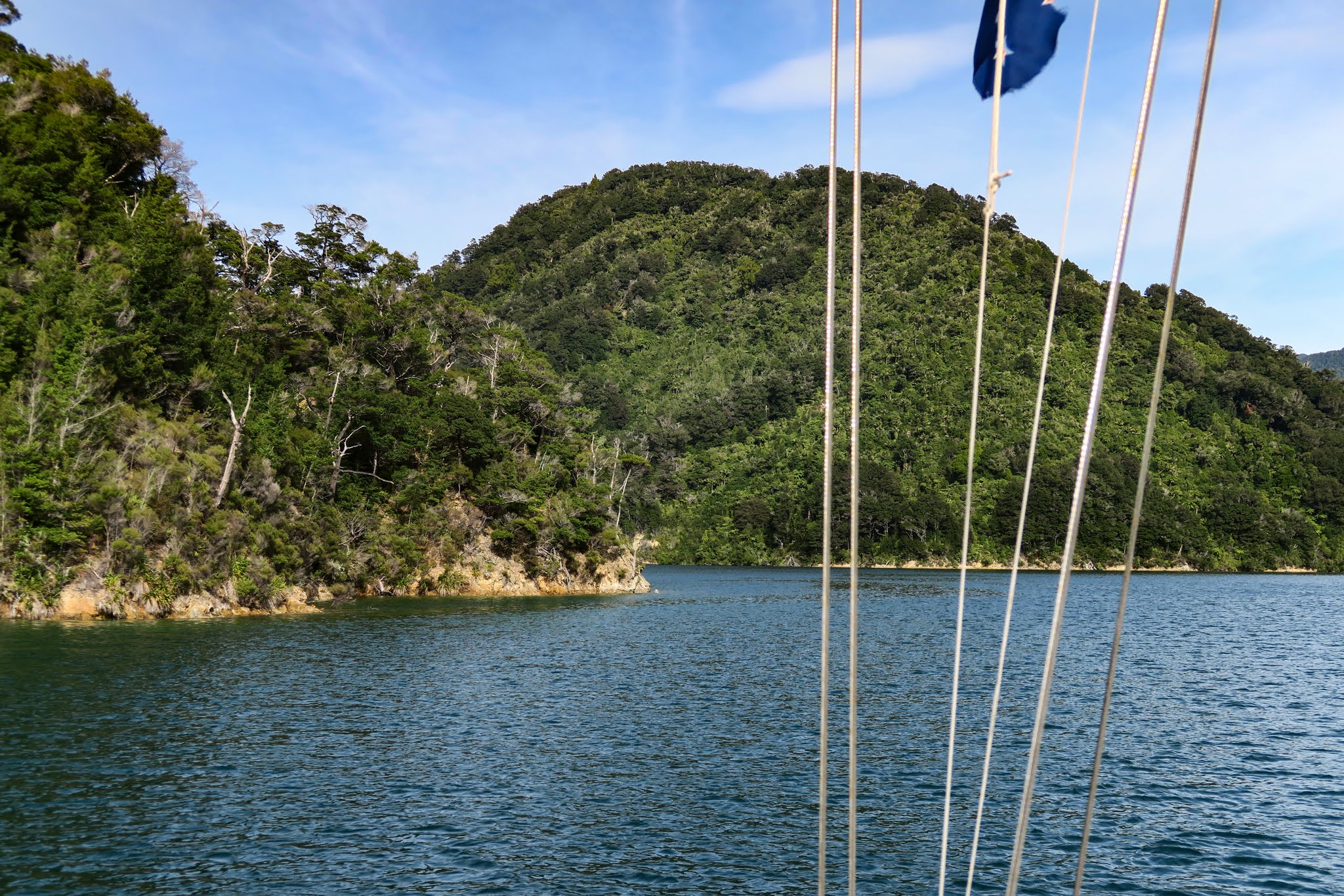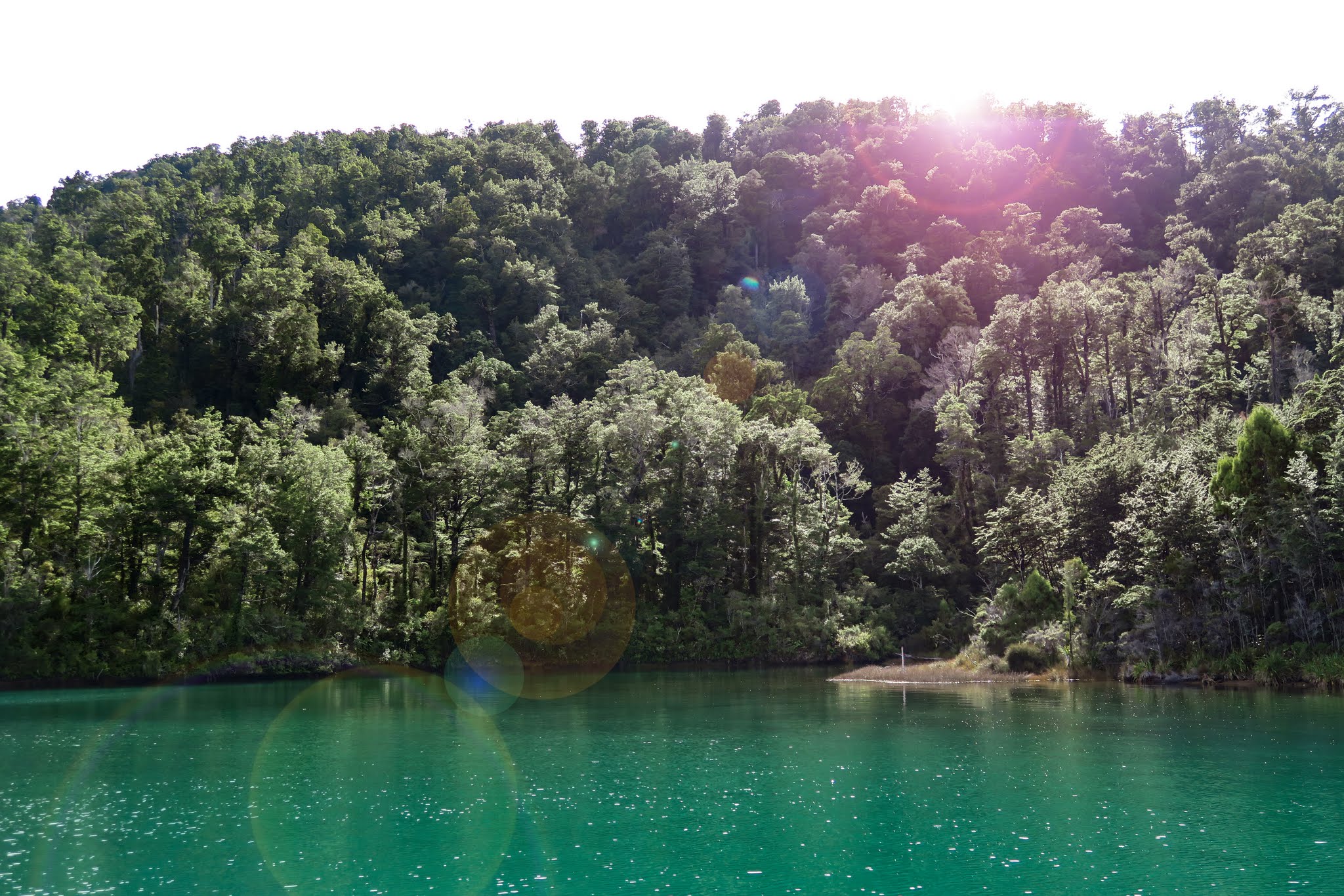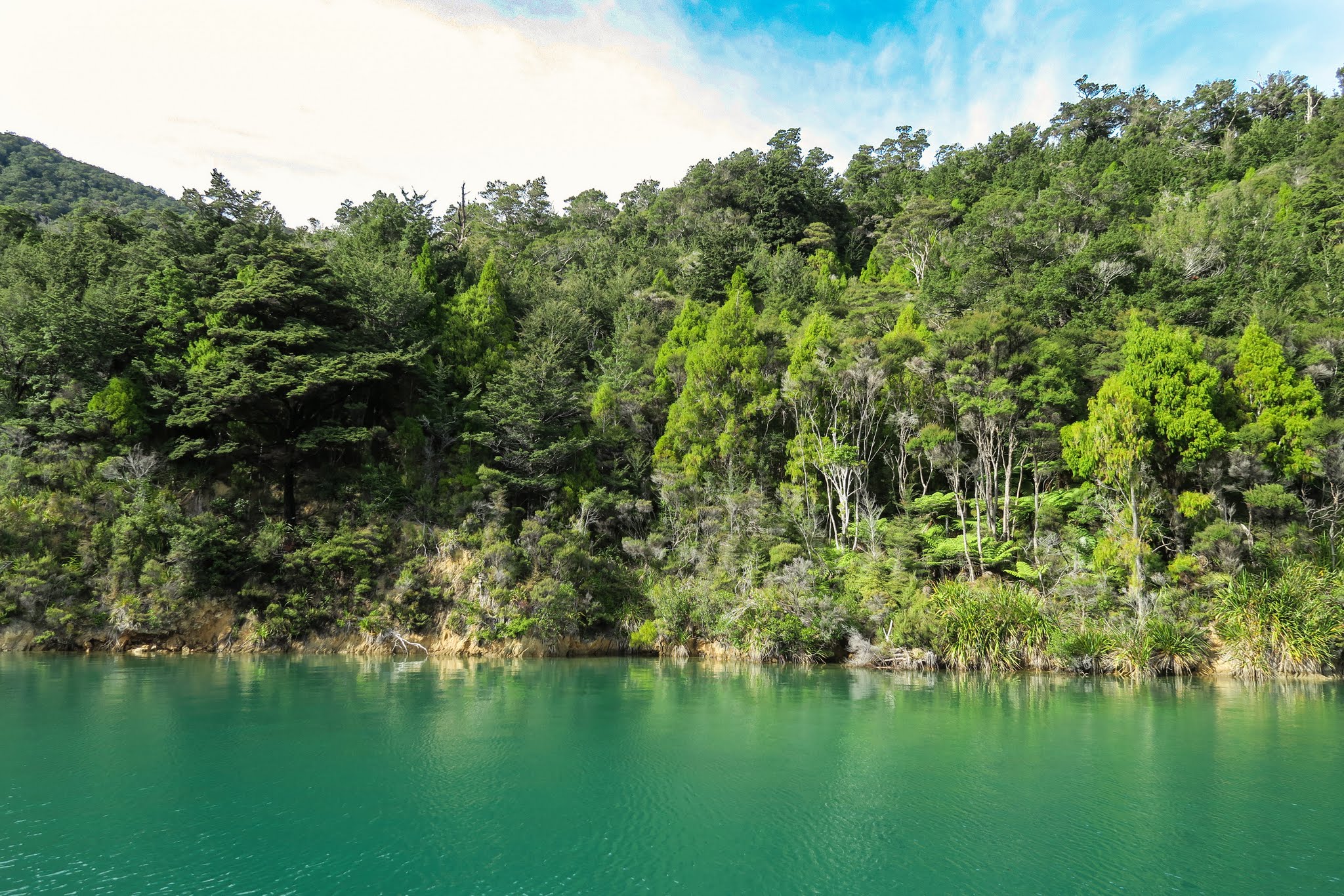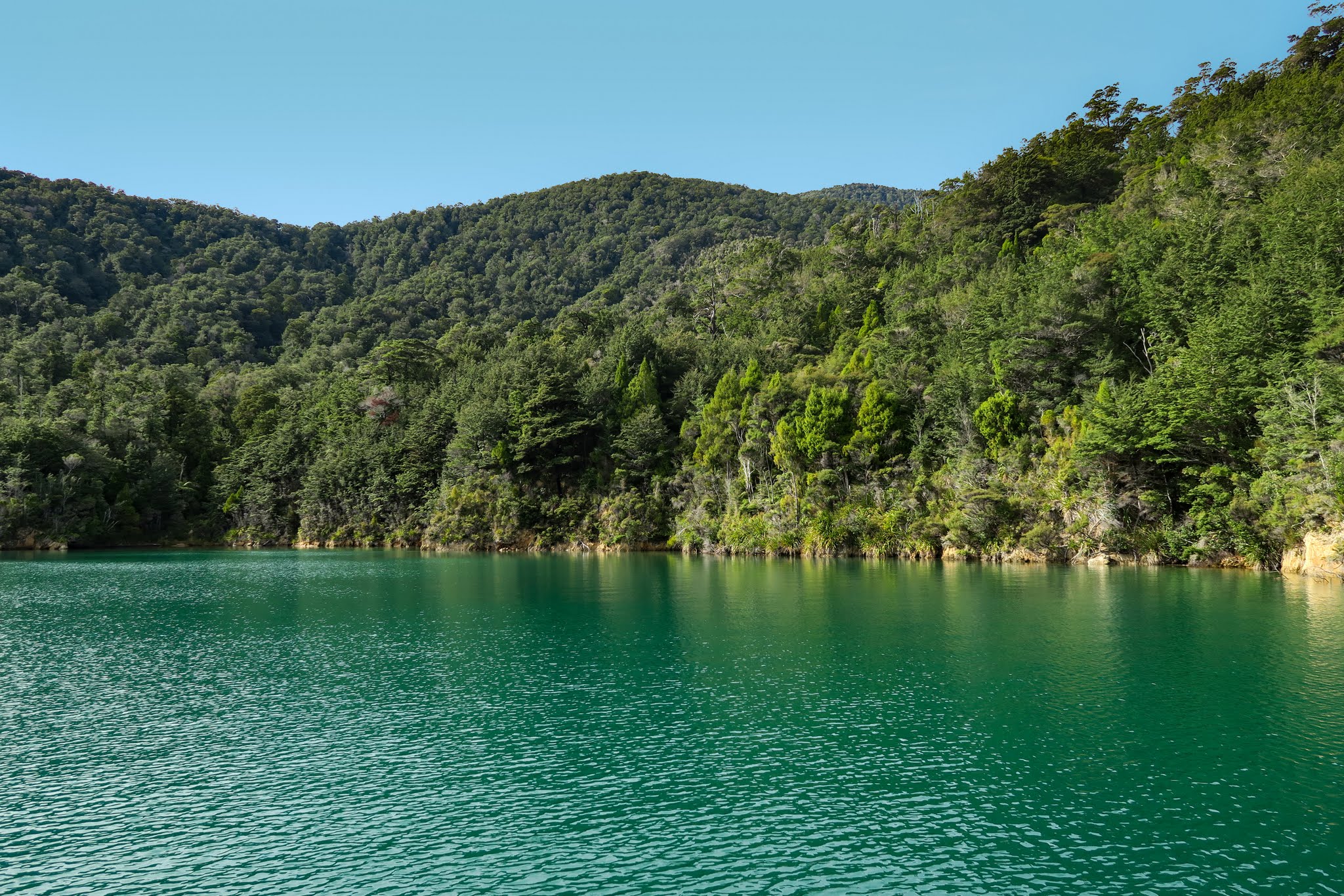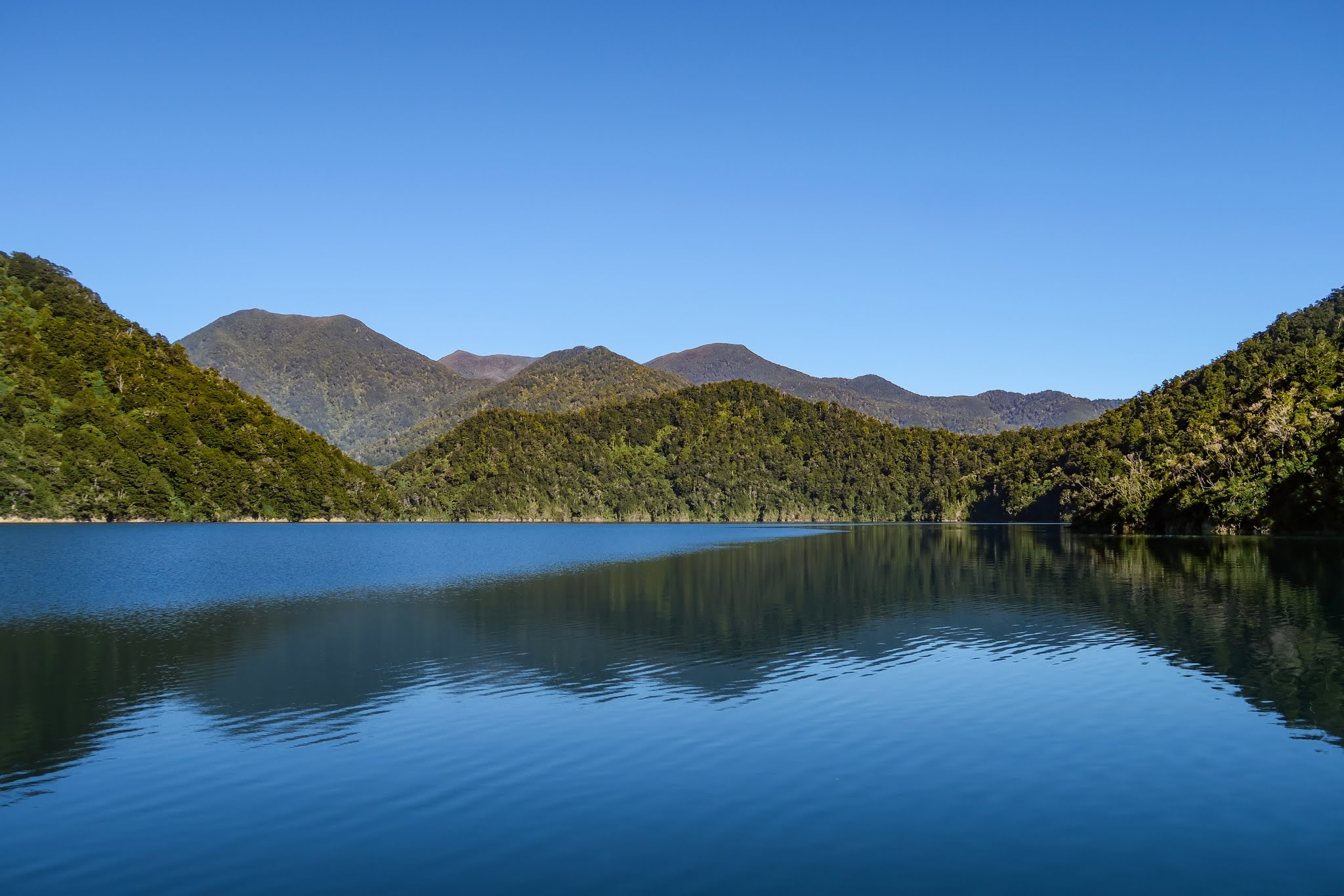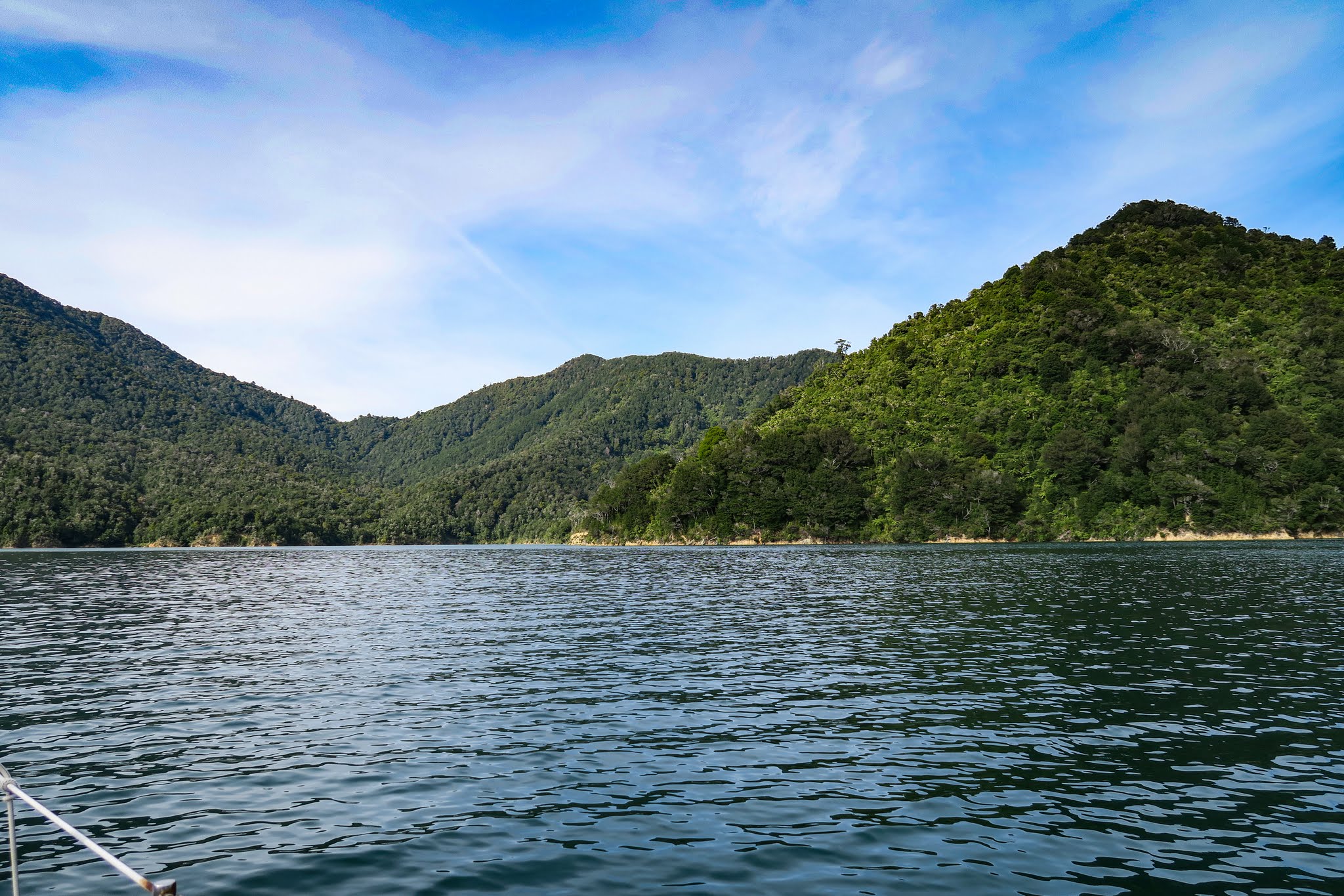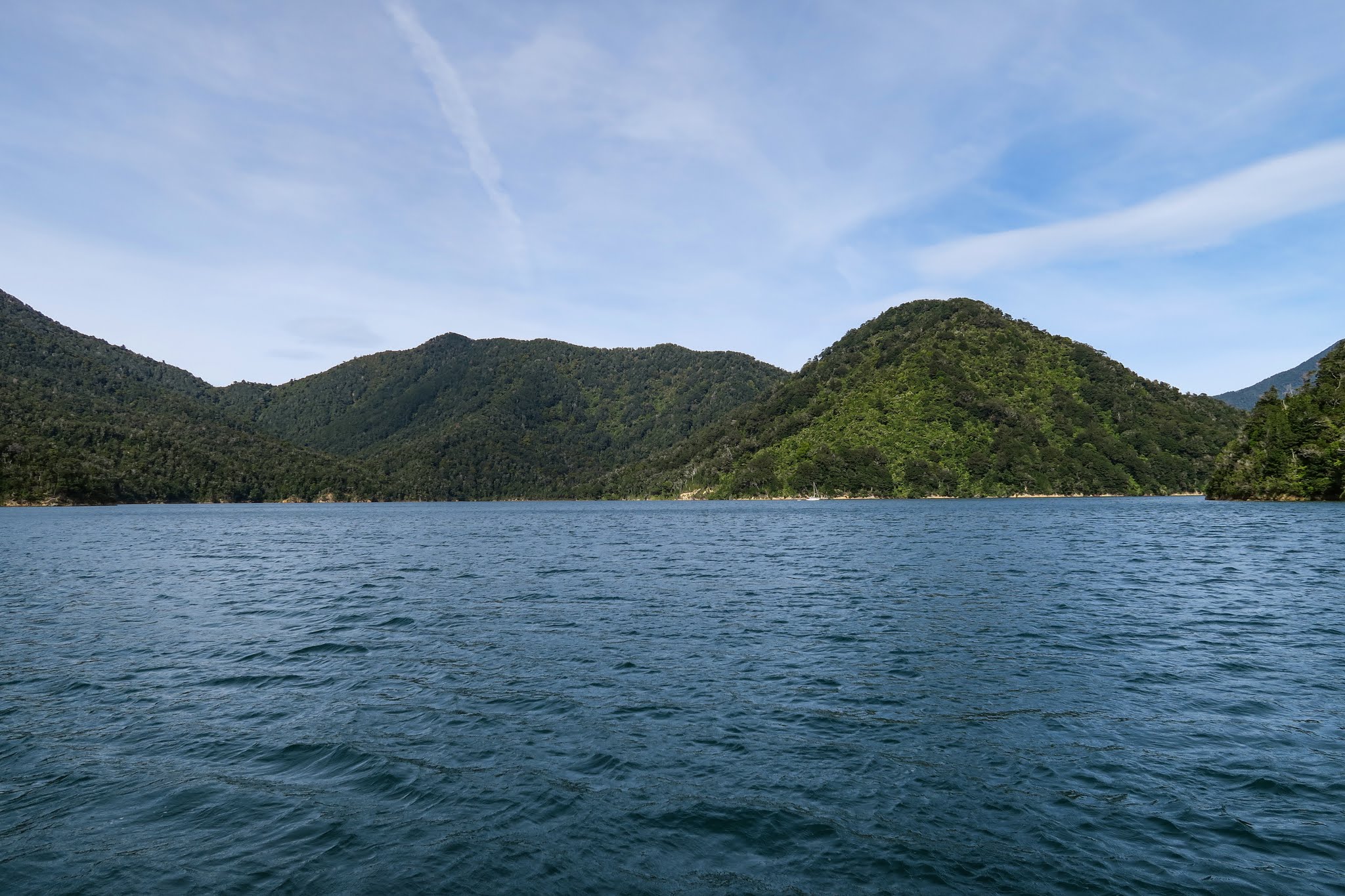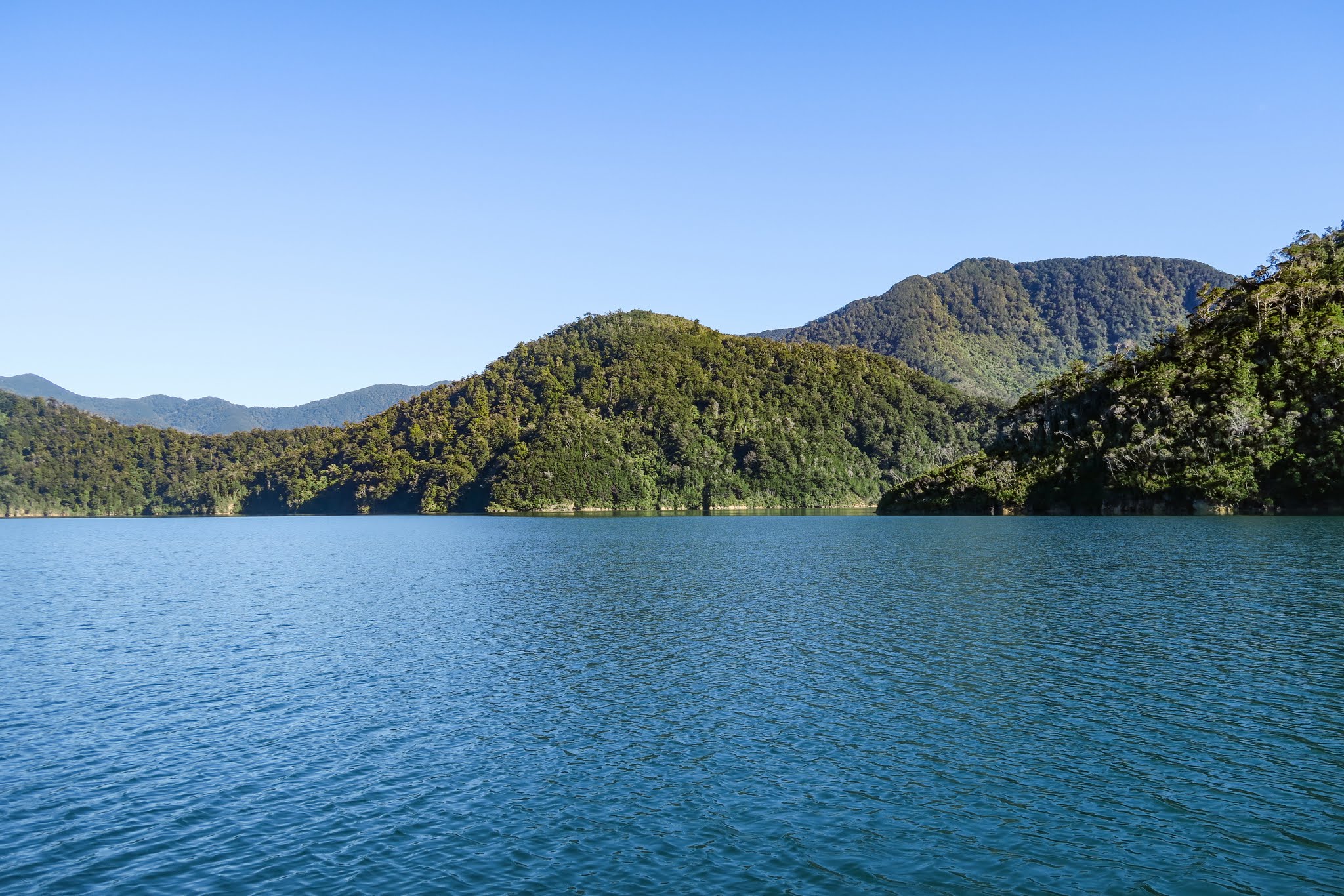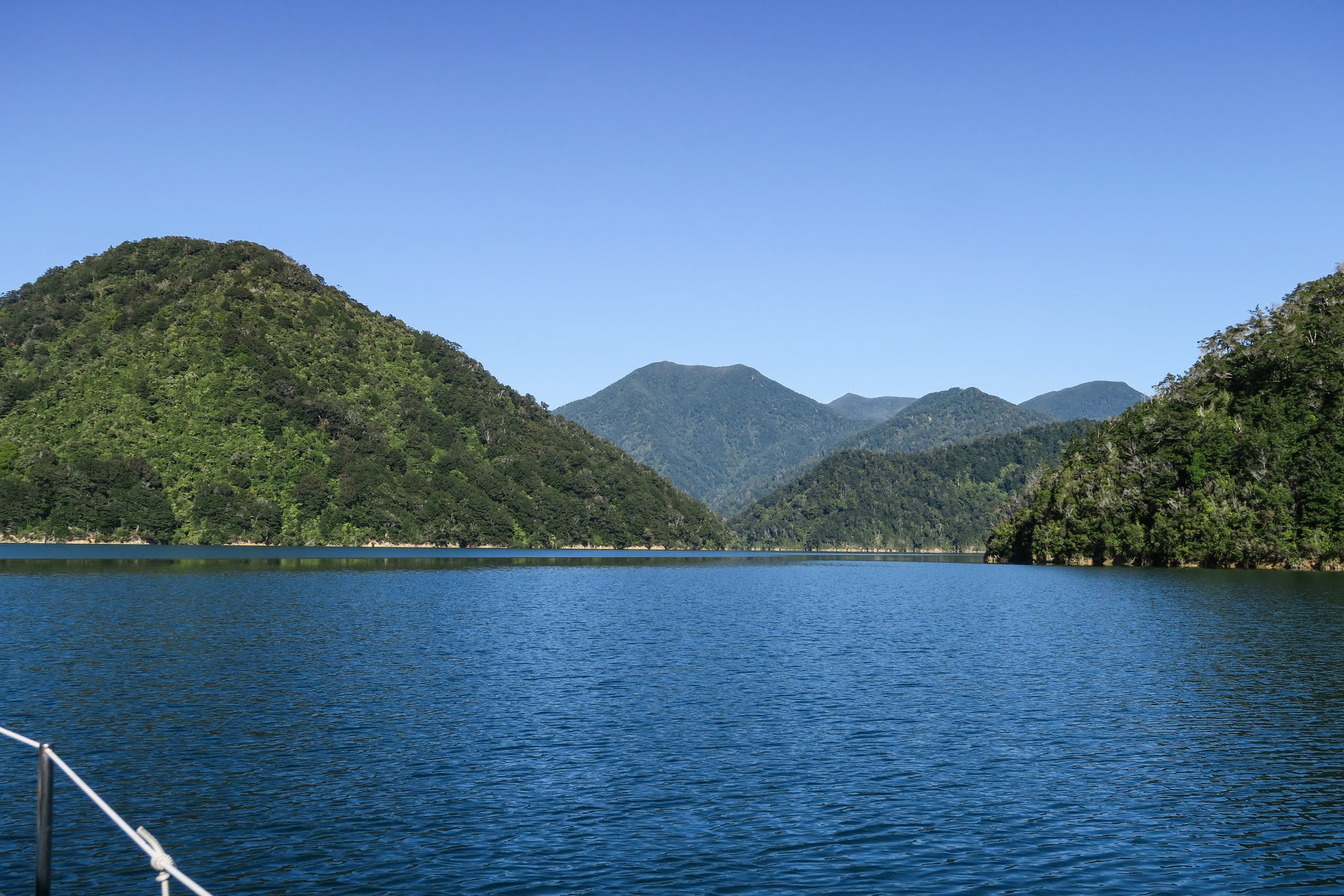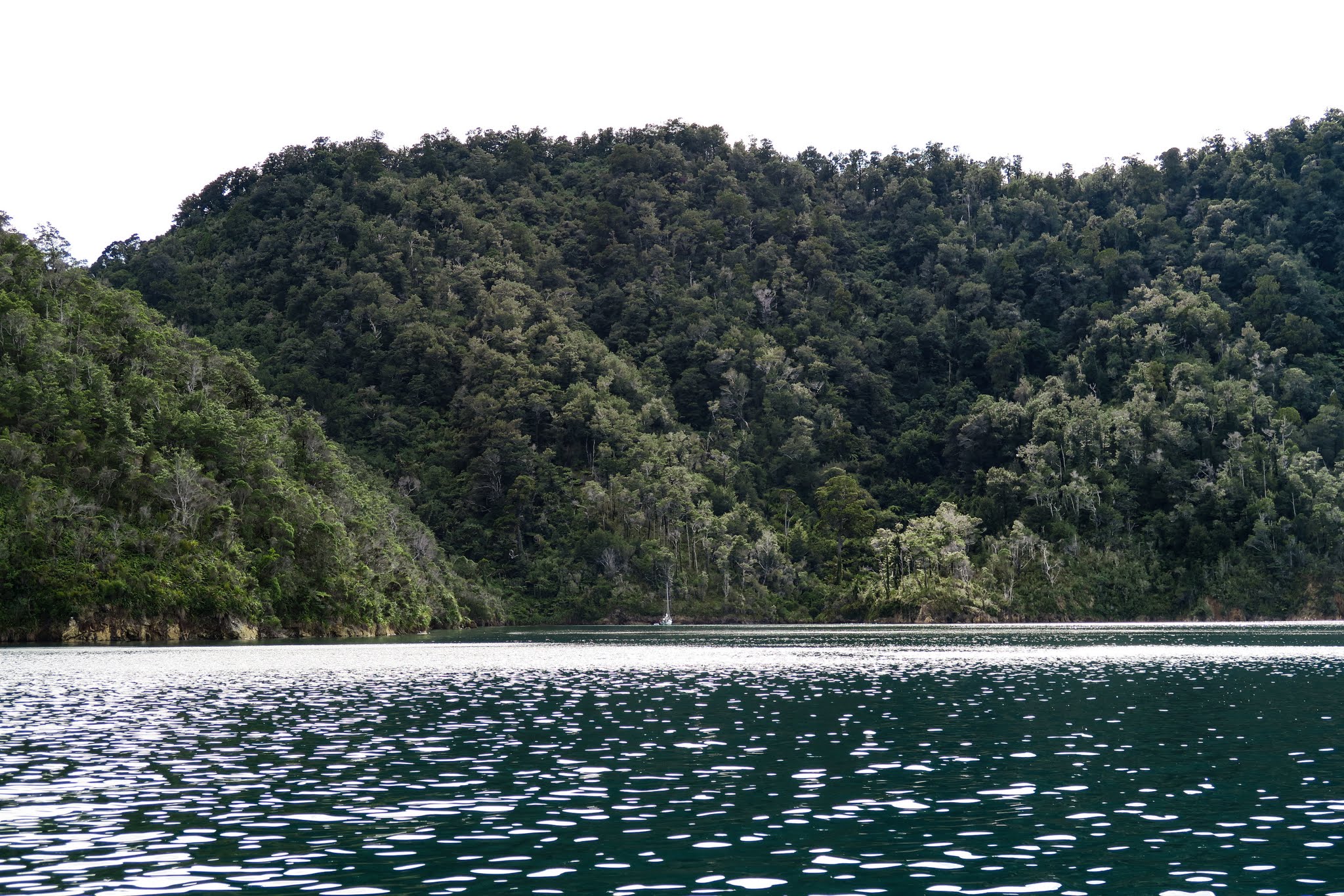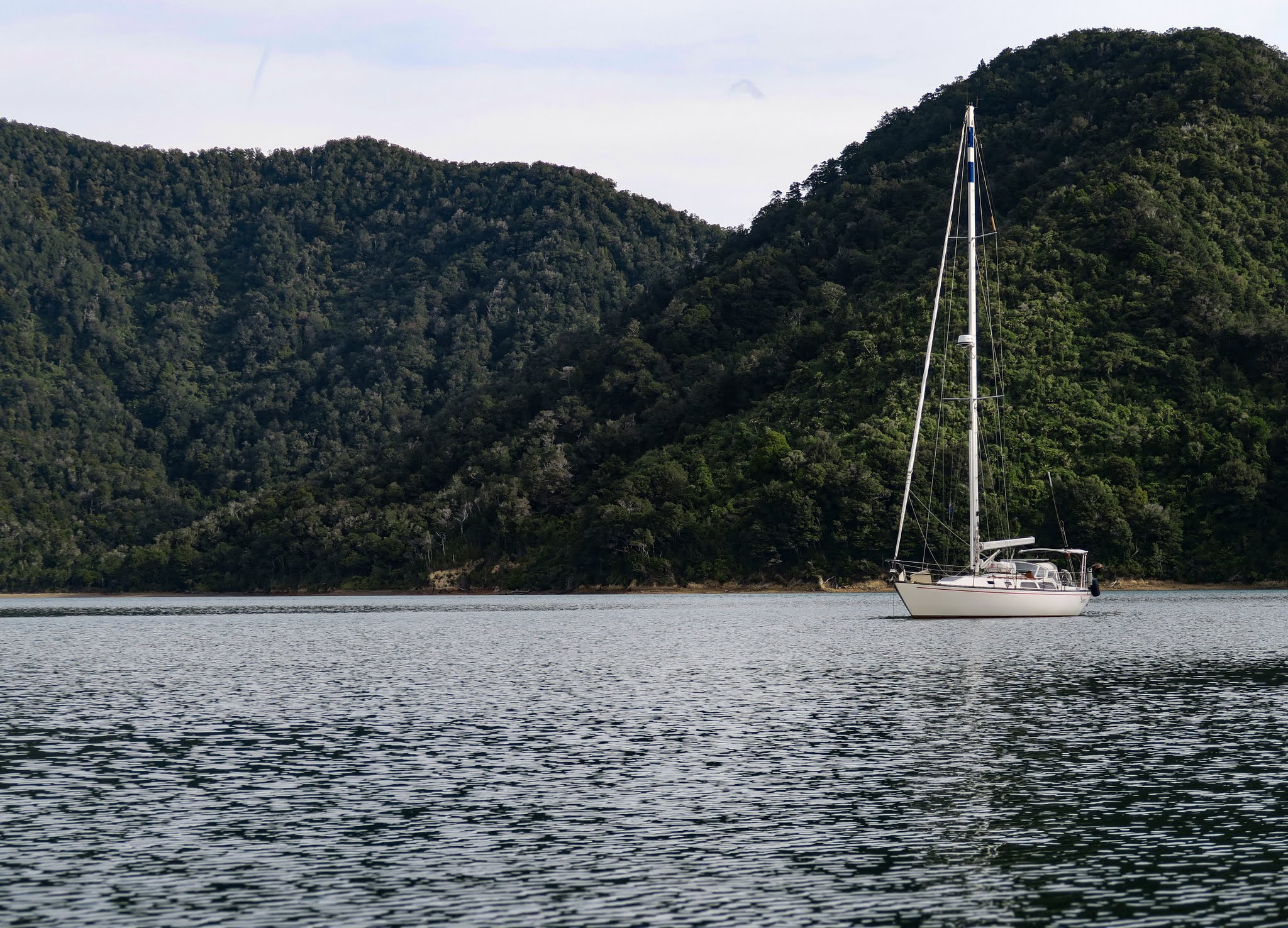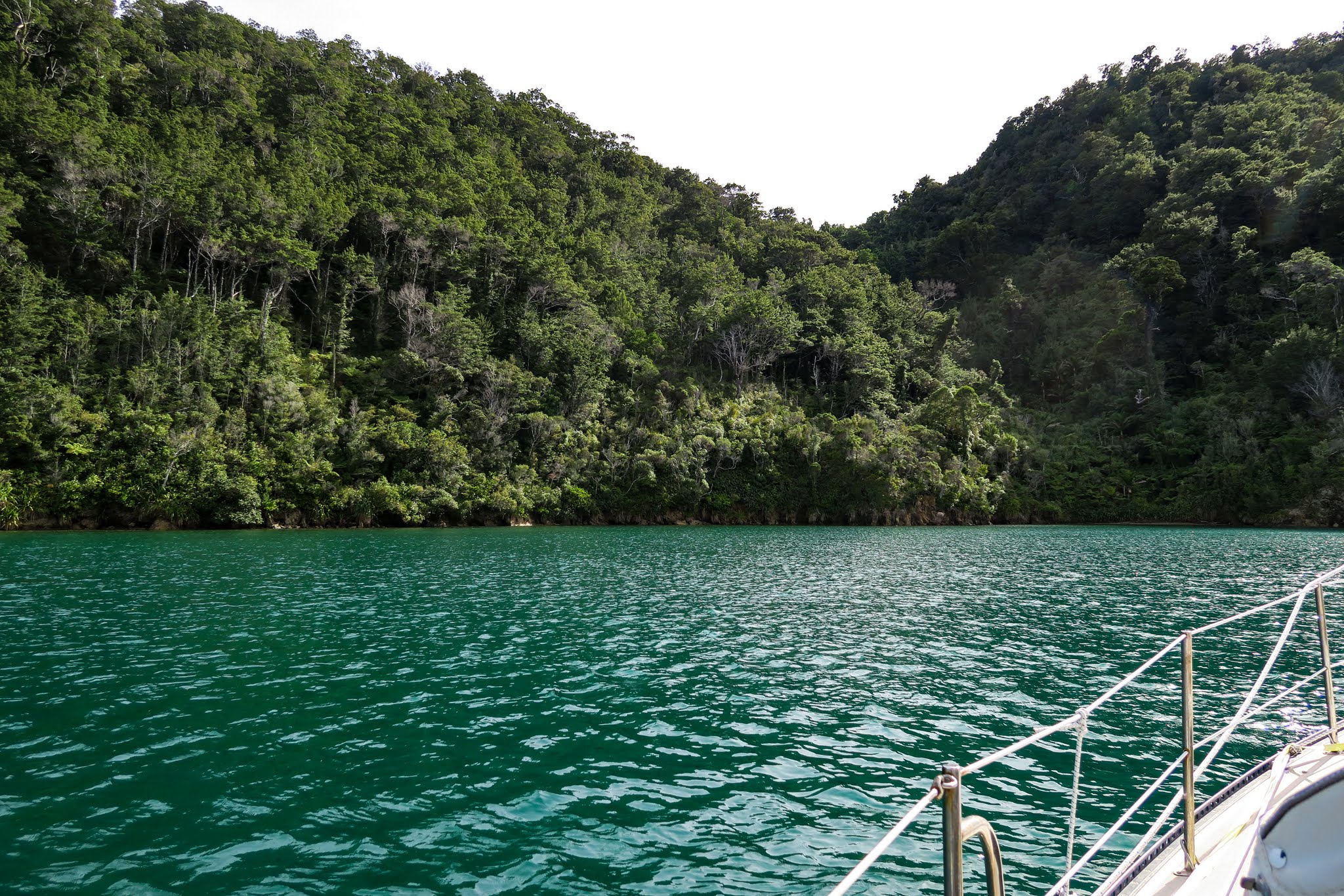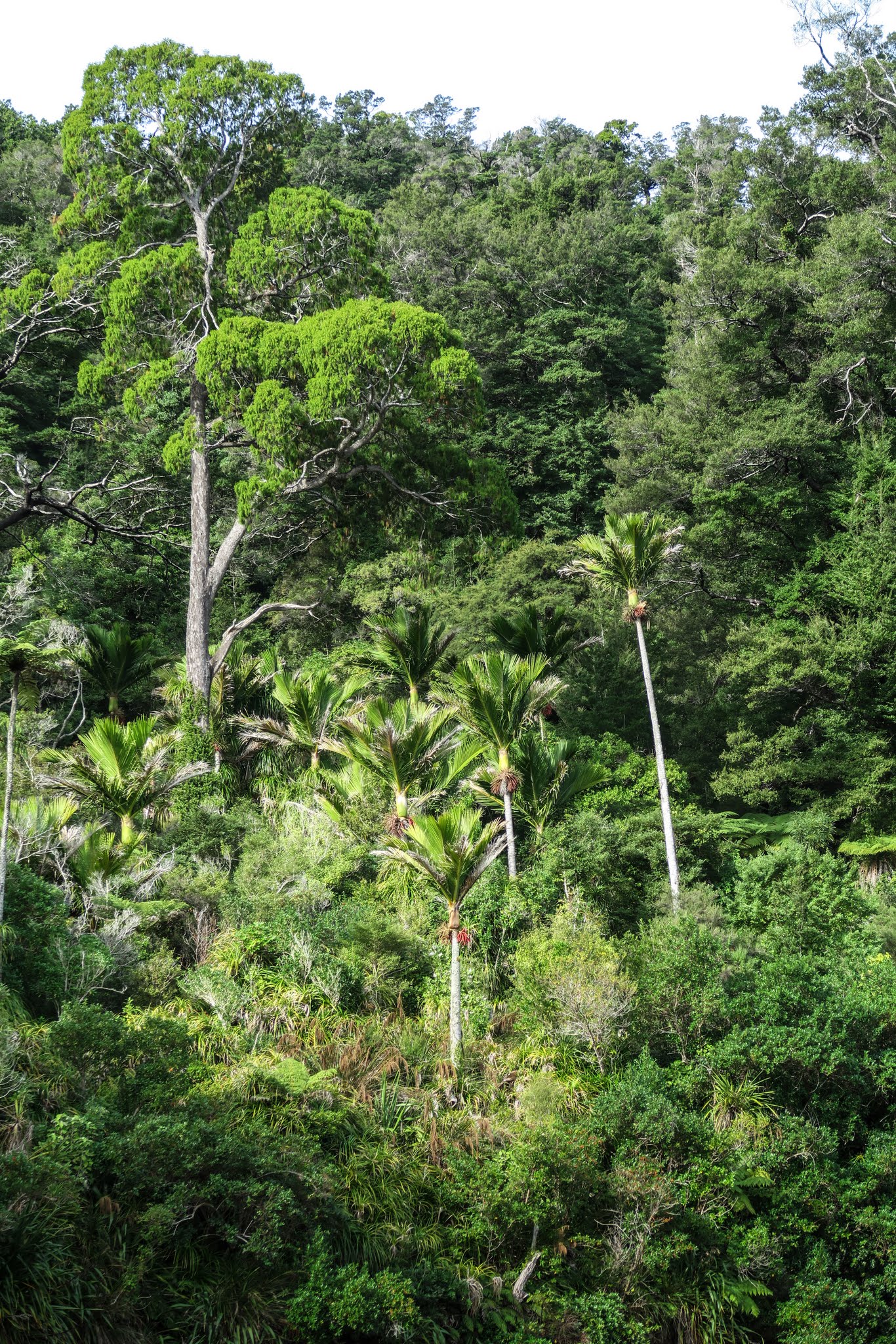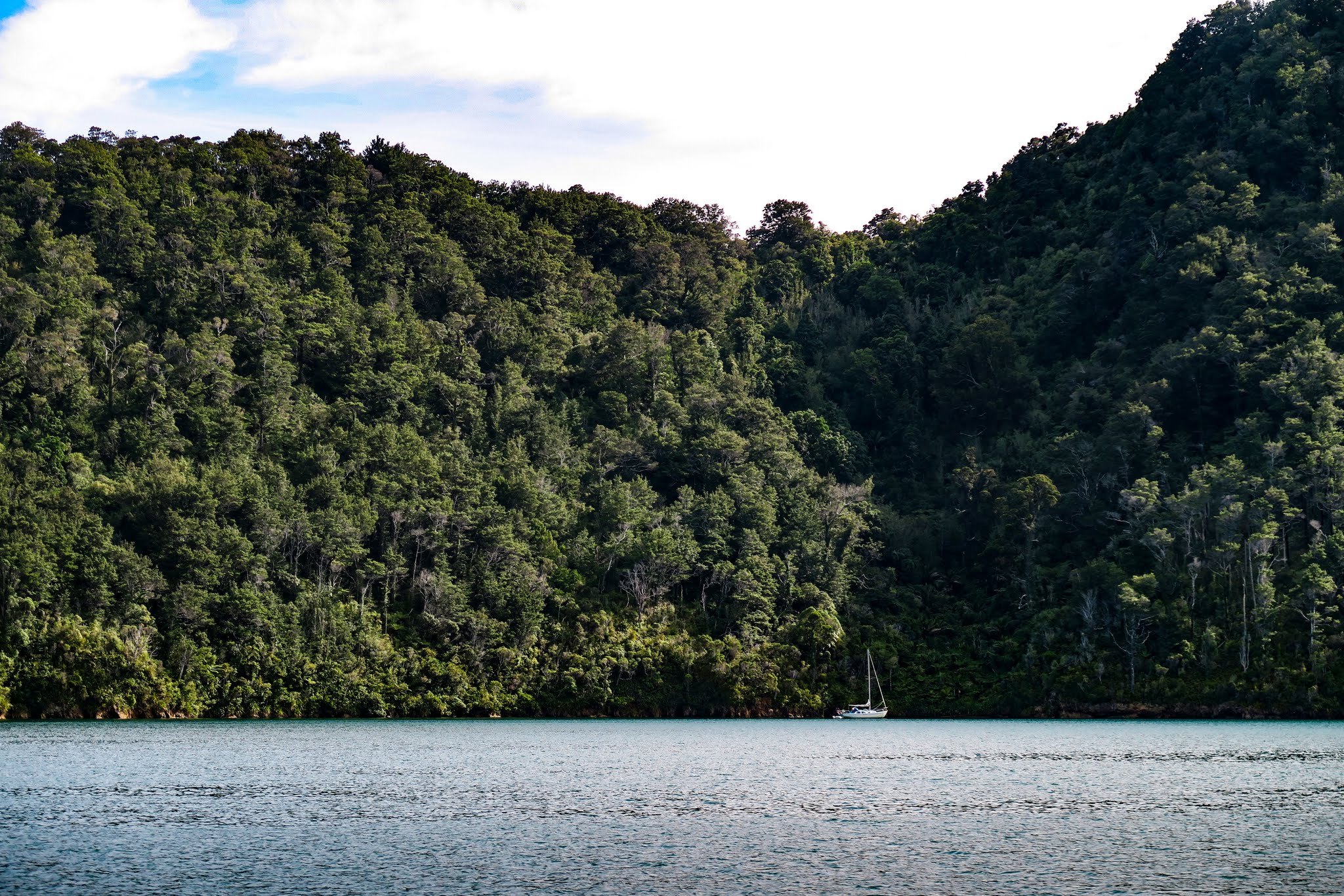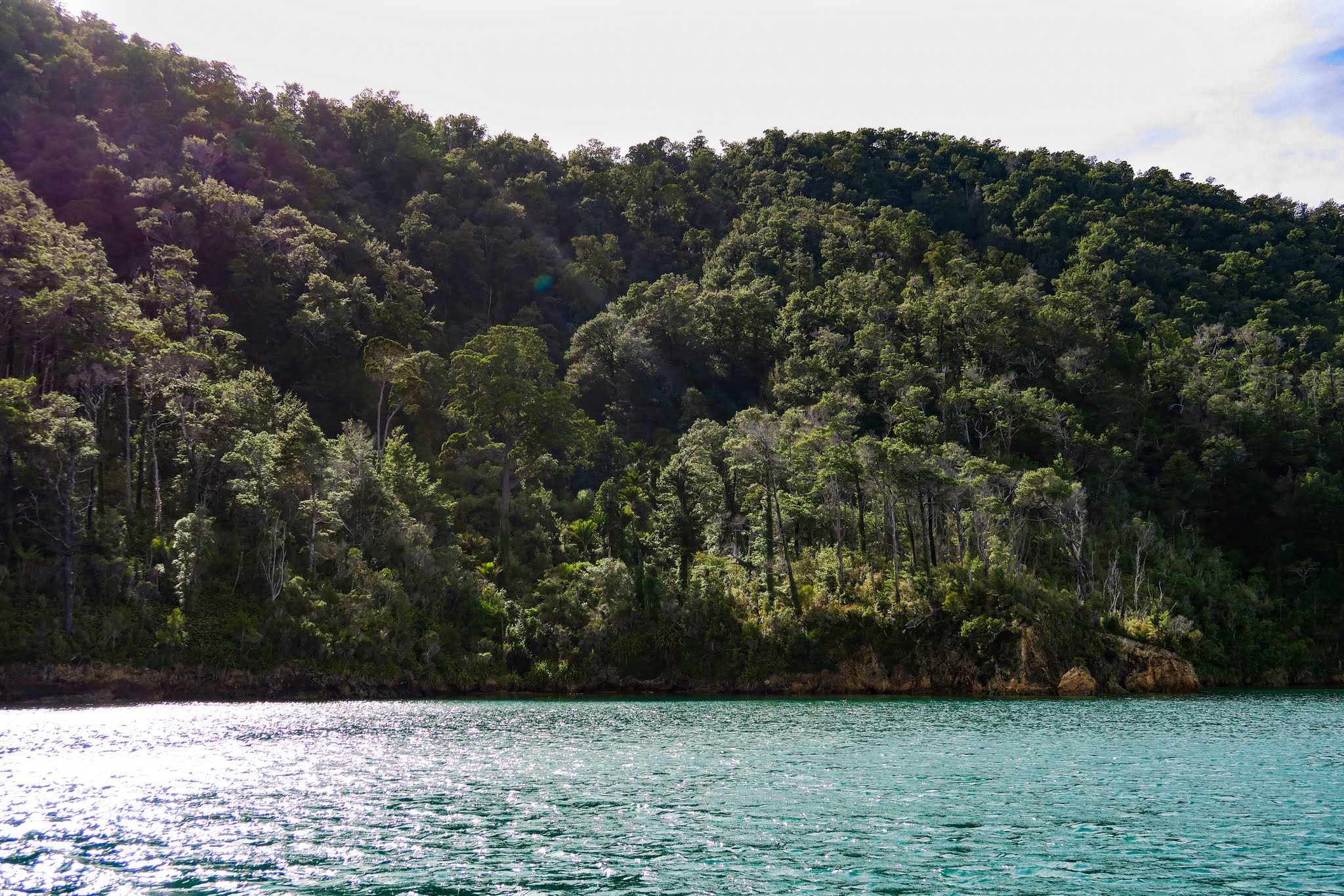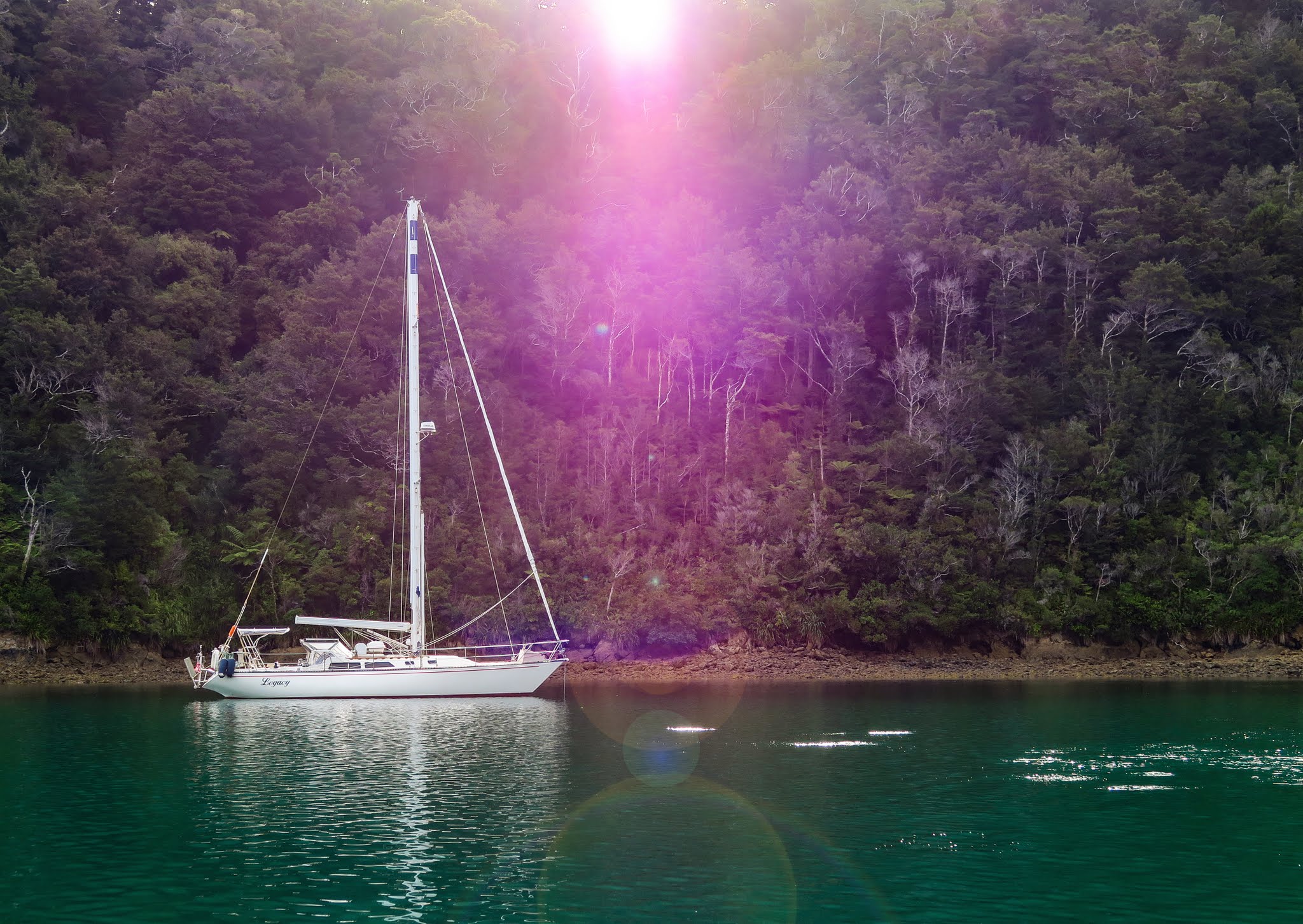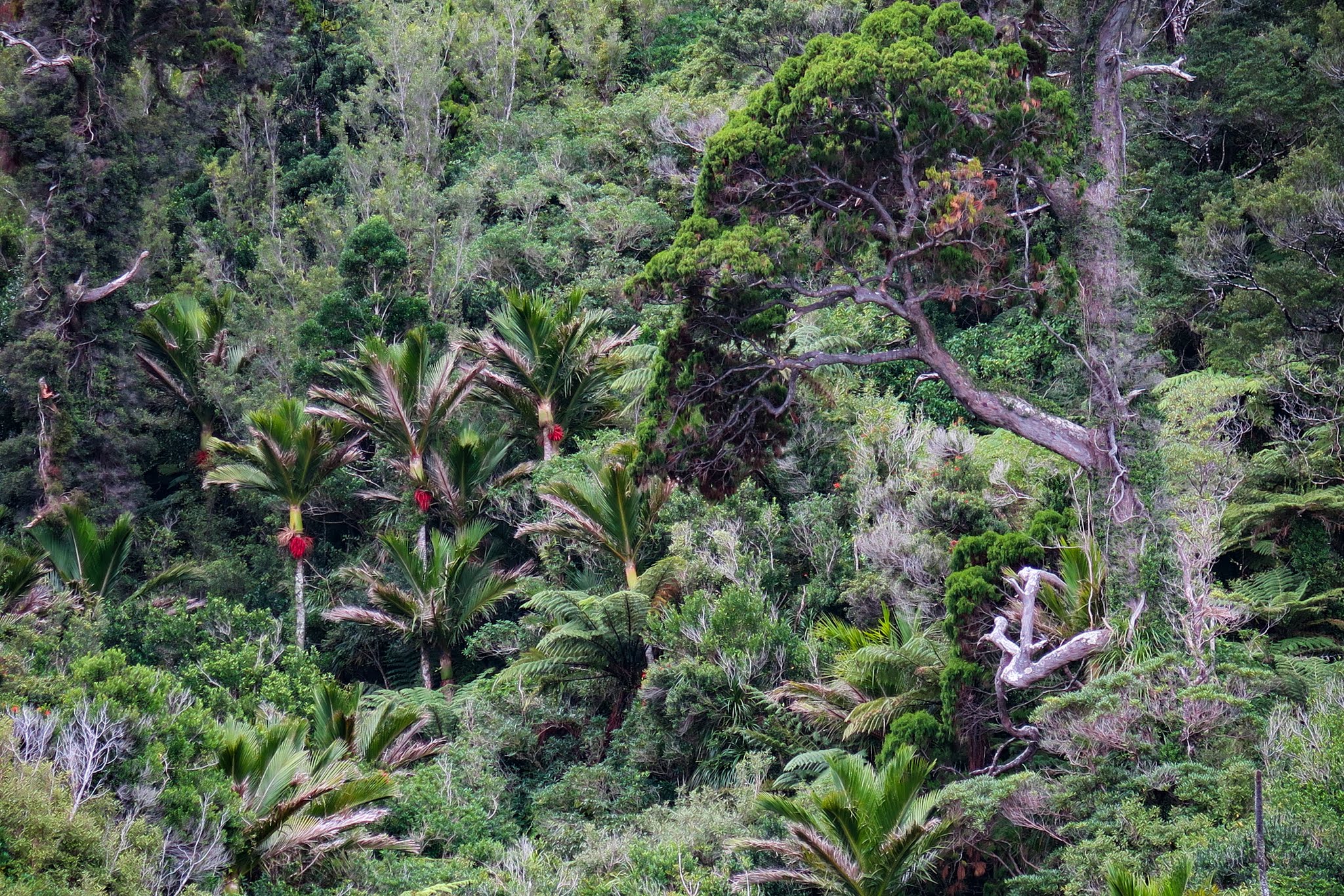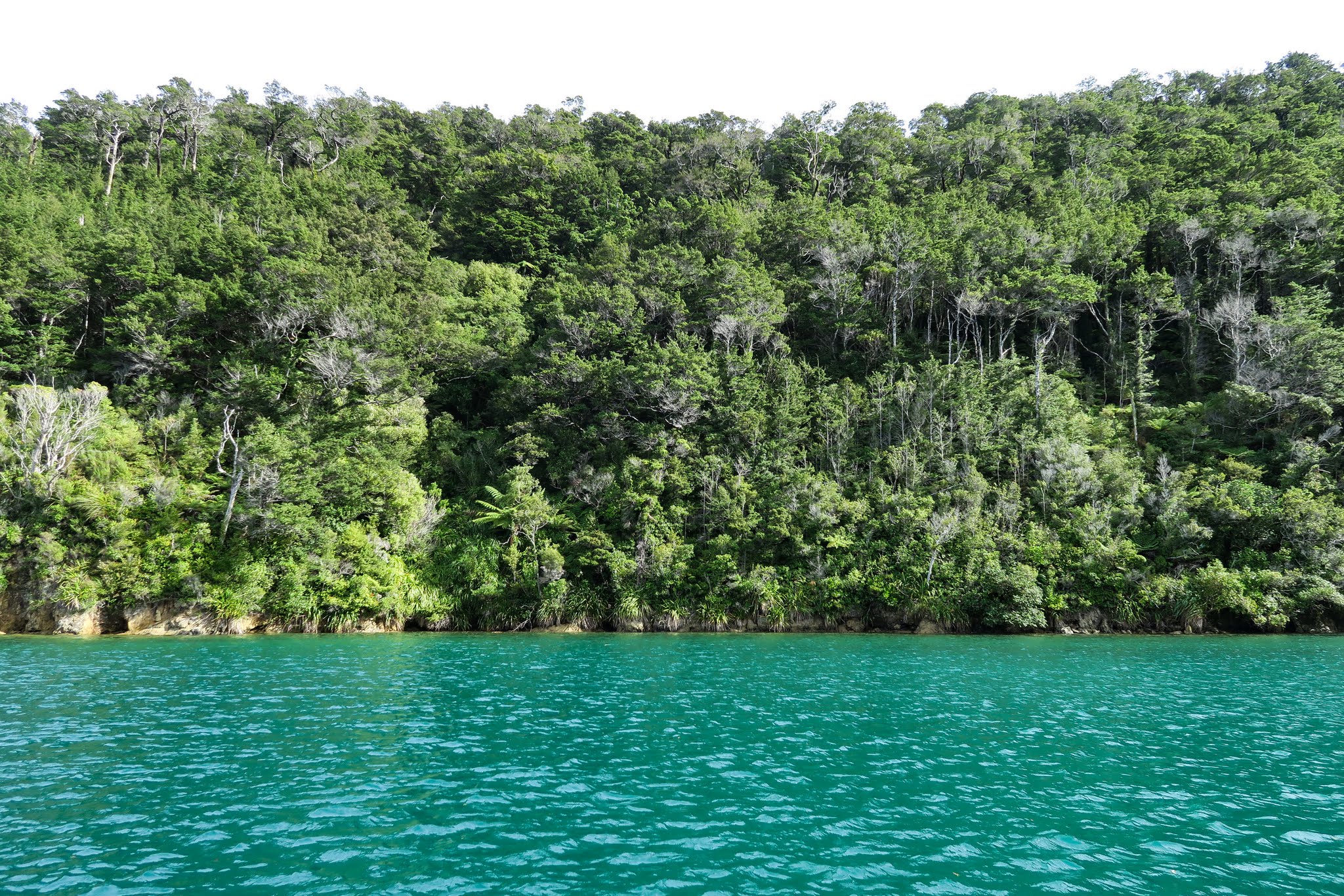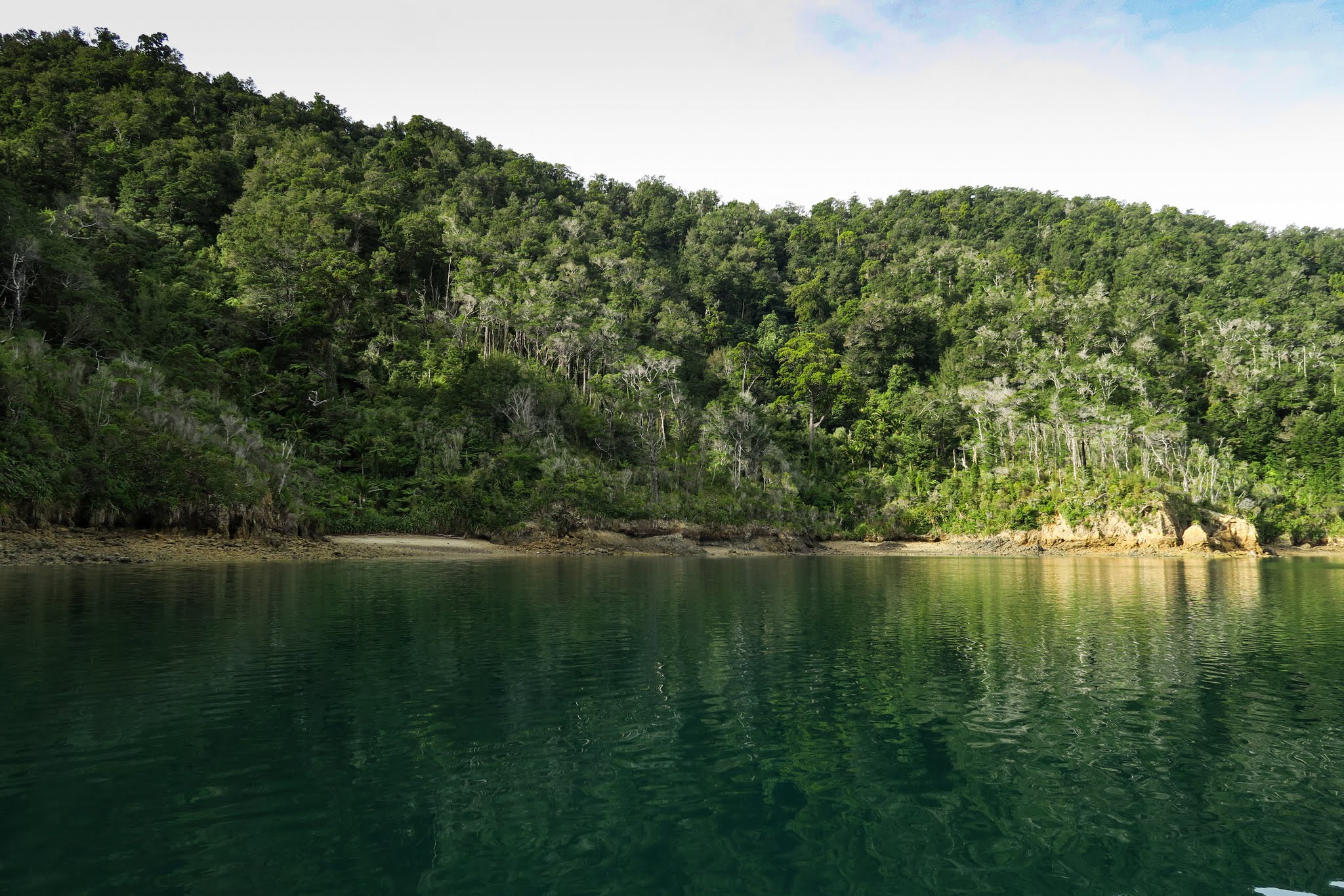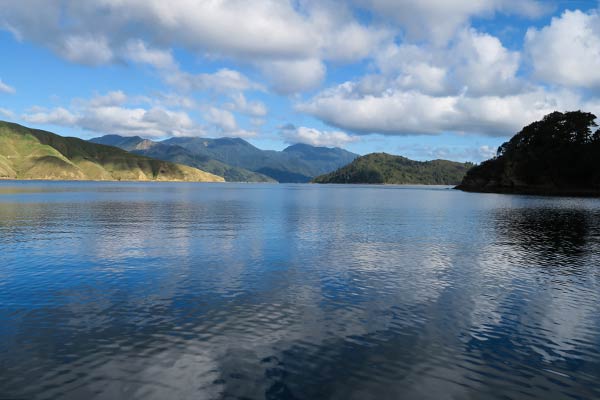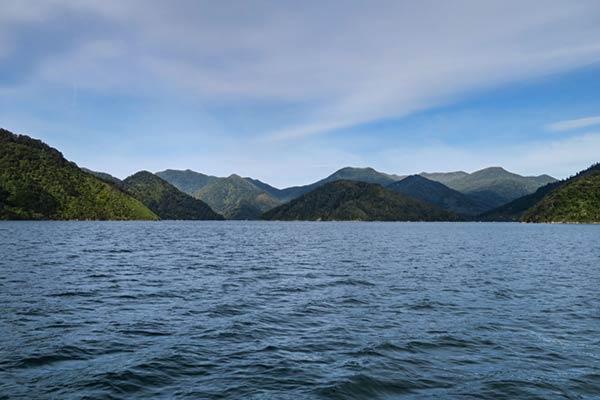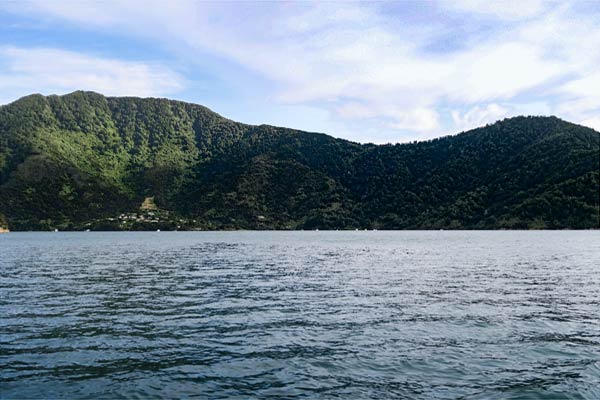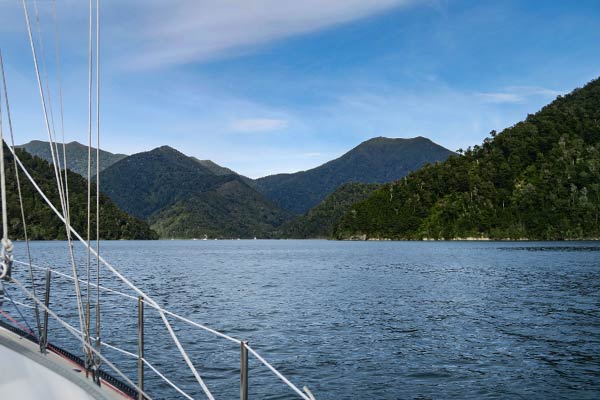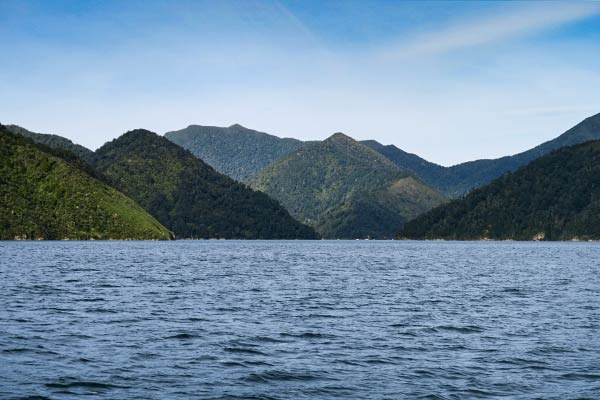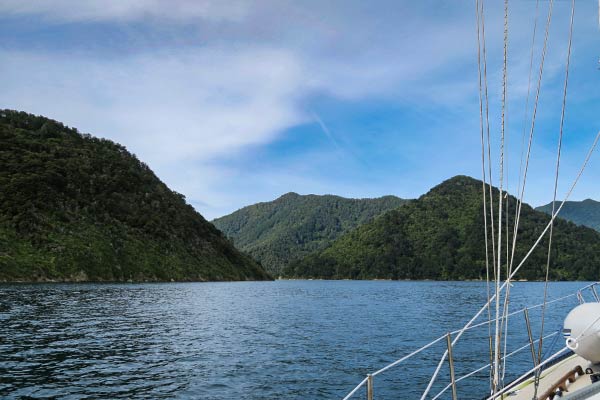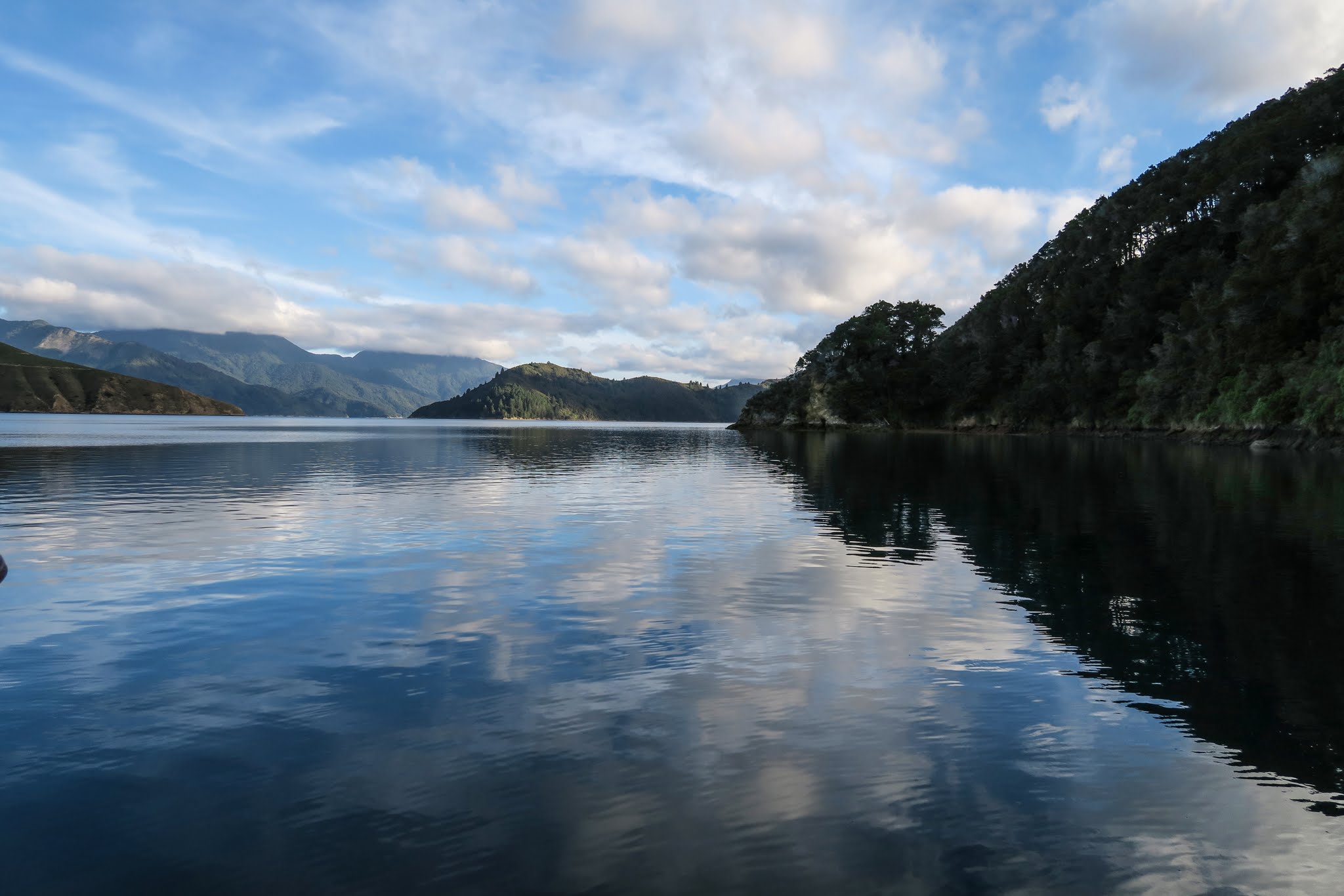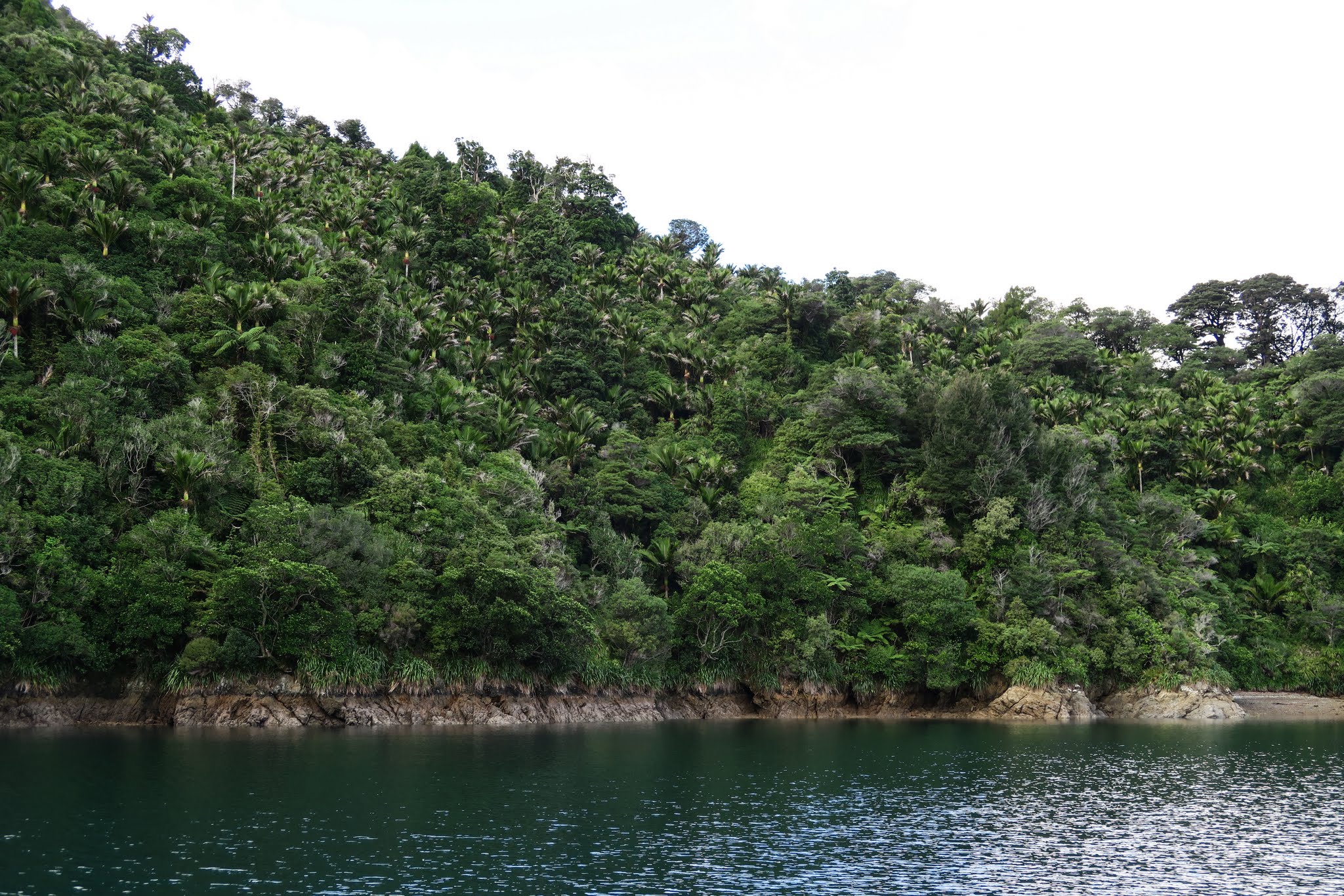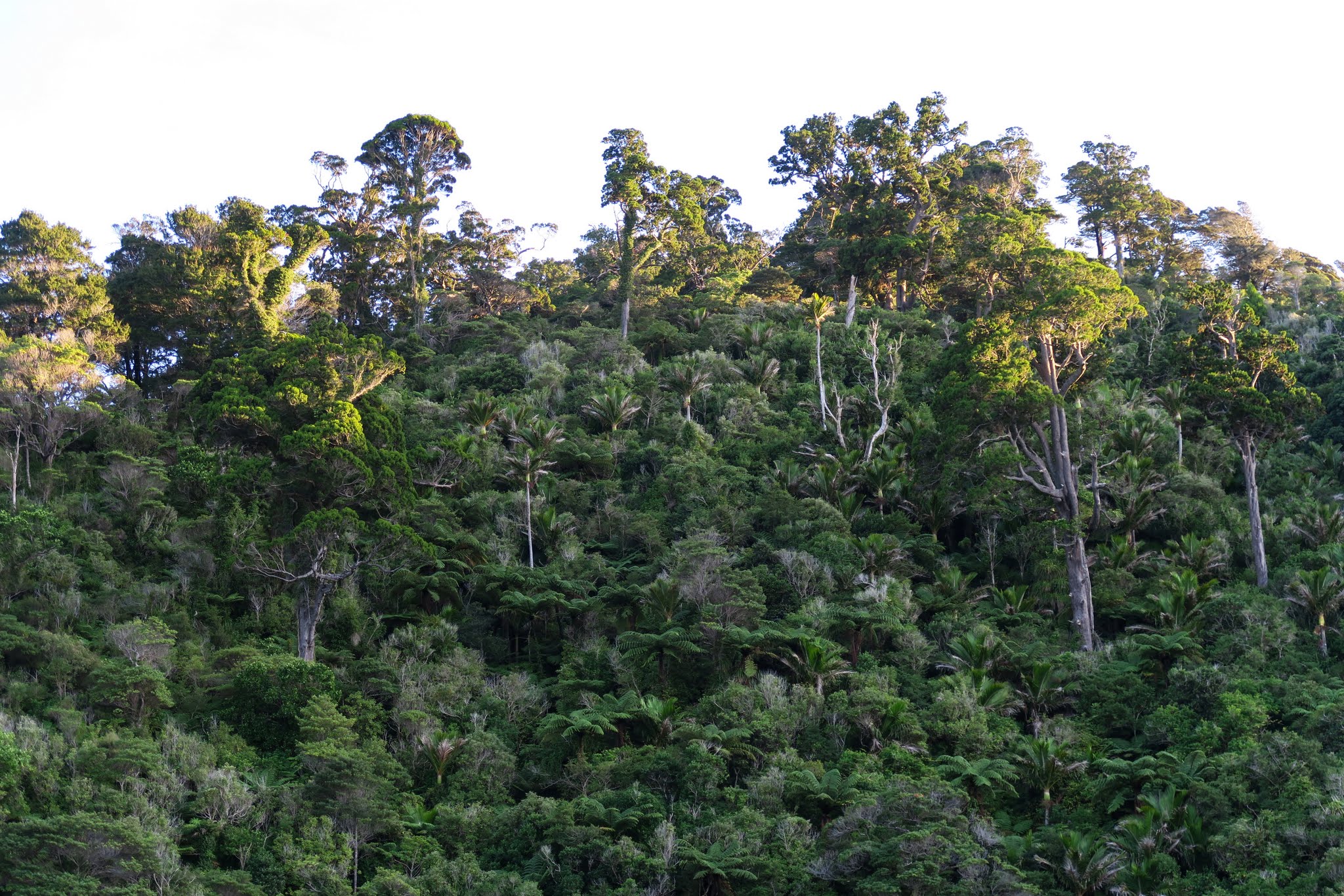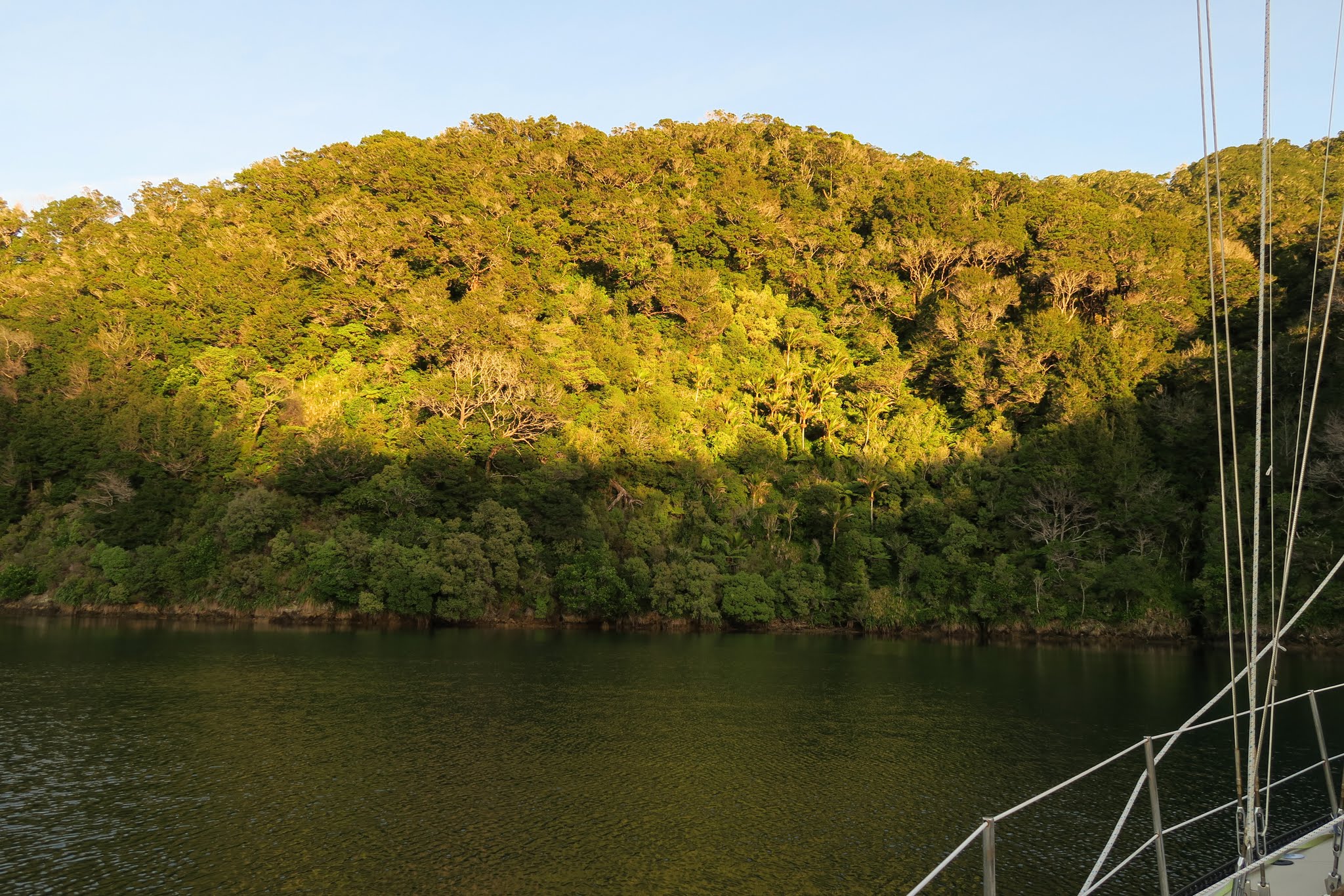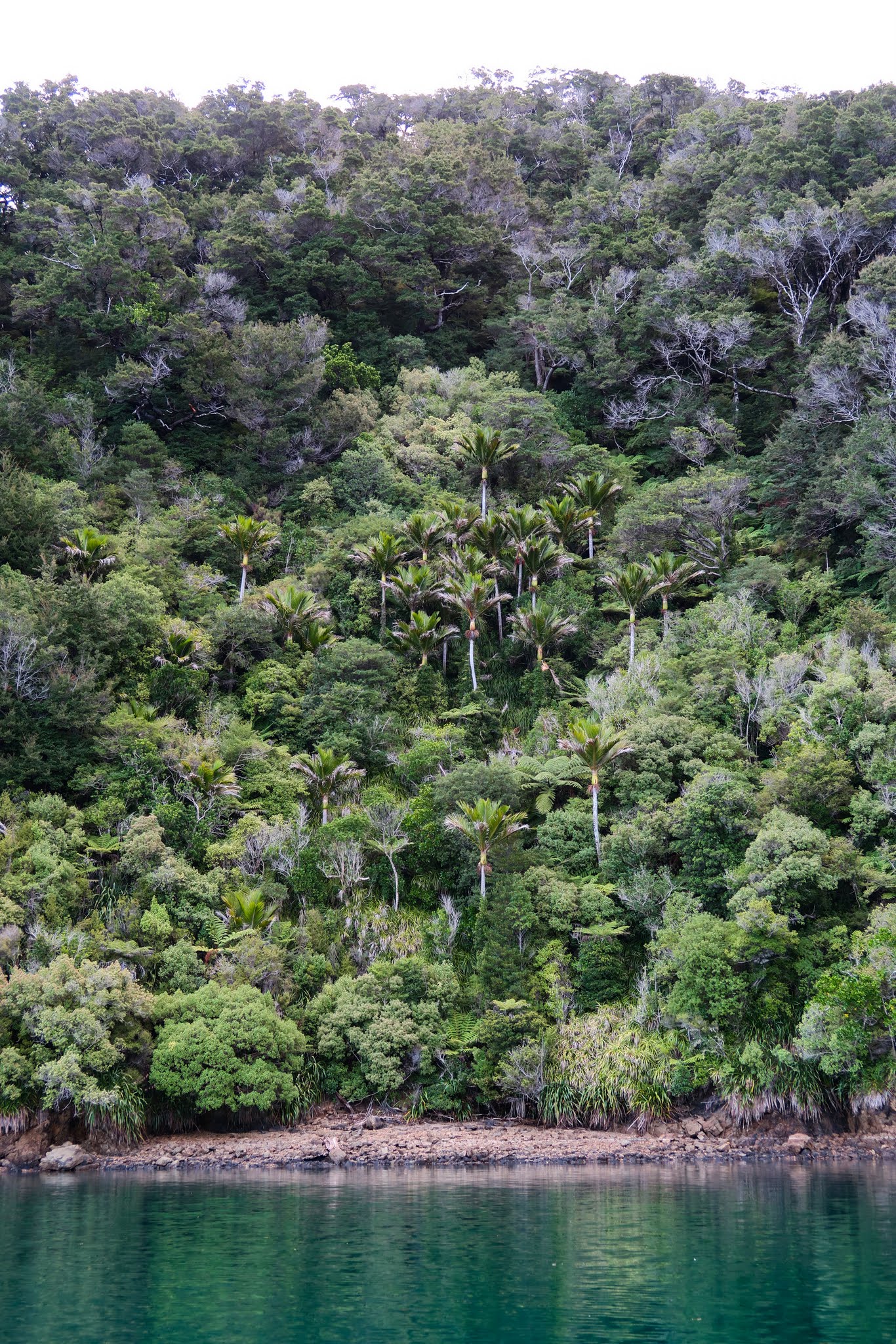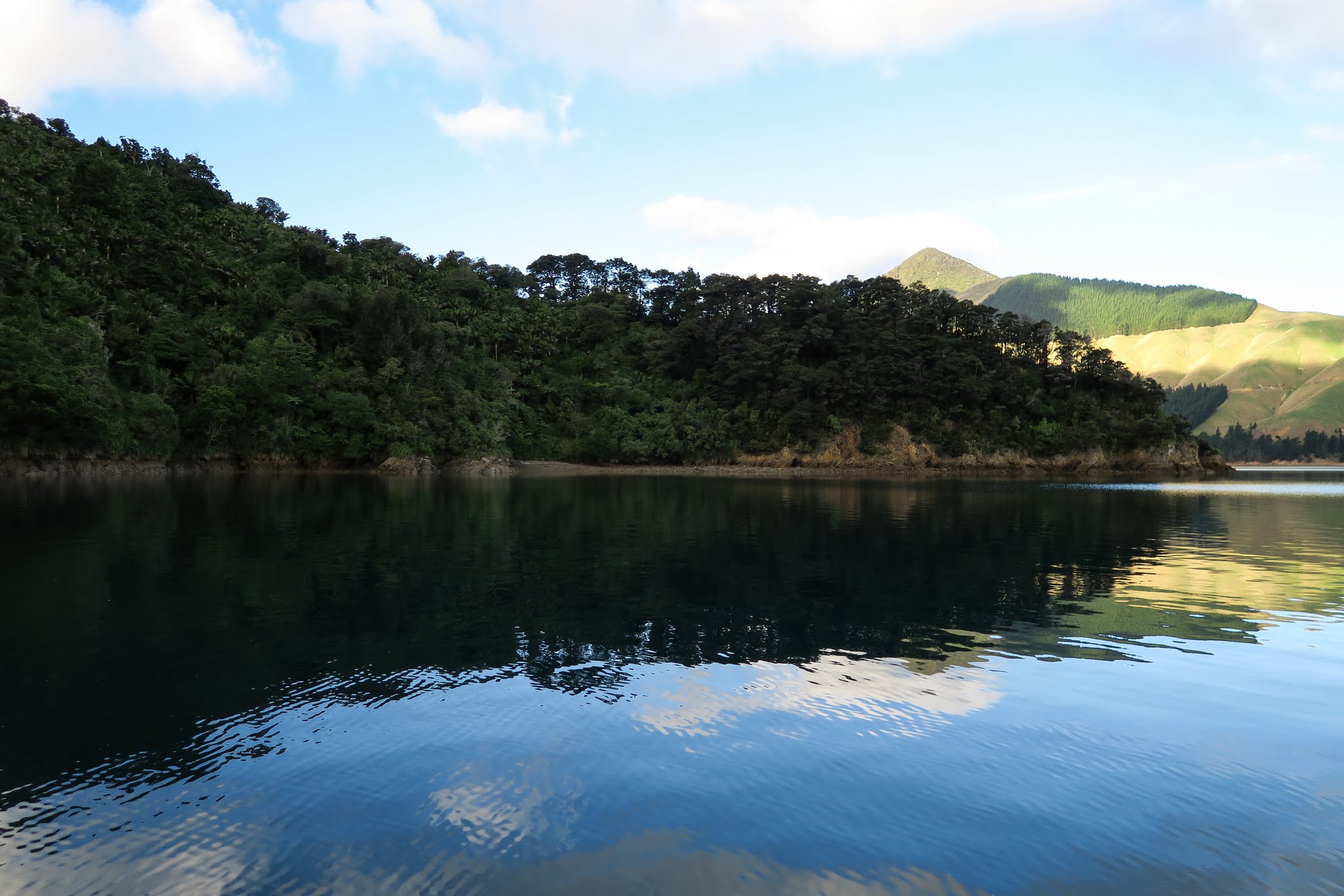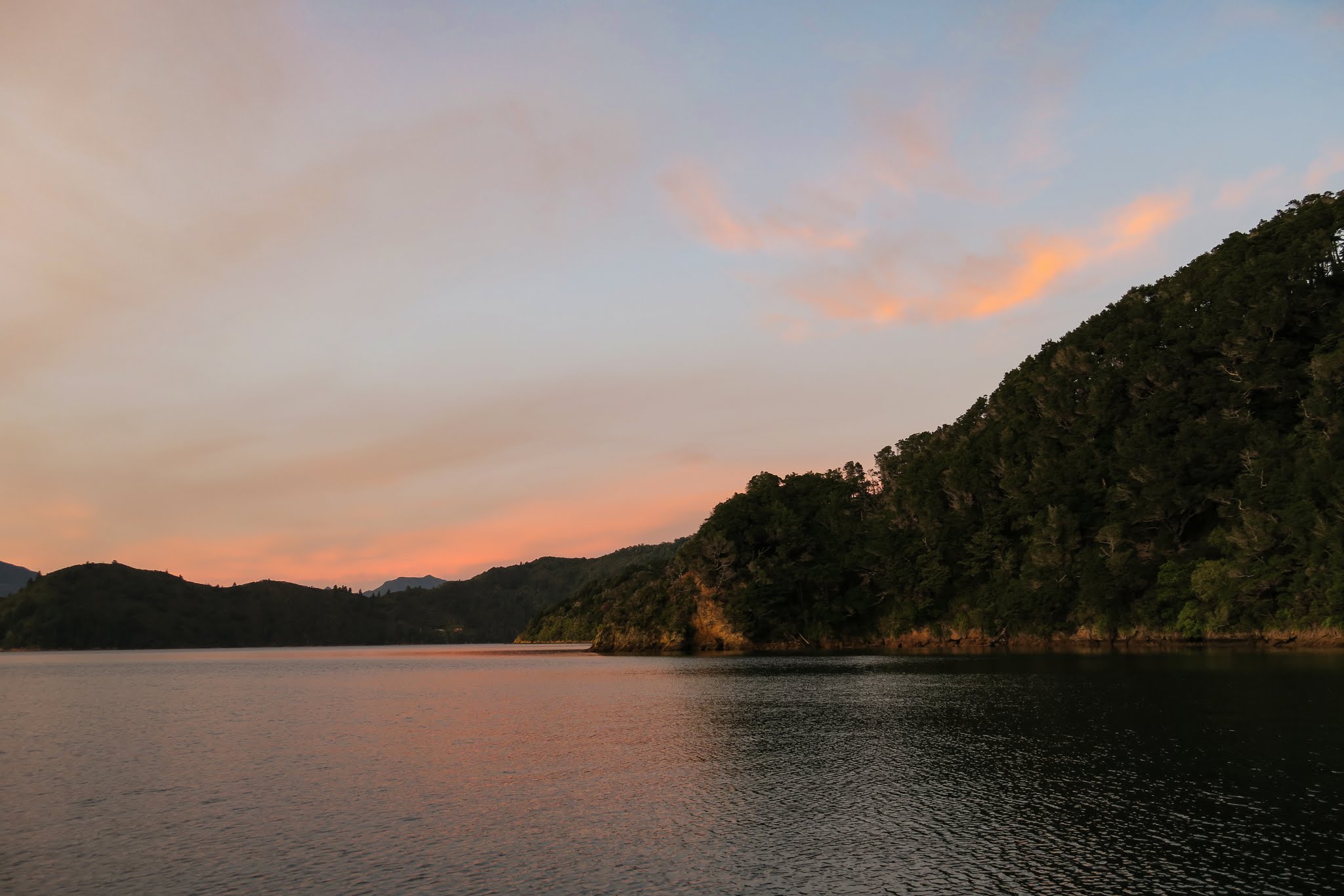April 7 & 8, 2016
The evening was calm, but overnight we had an unpleasant lesson in how winds can gust right into a protected anchorage. Actually this concept isn’t new to us: we’ve already experienced how winds can arch right over the top of a tall mountain and go barreling down the far side to blast any boats hunkered down there. In fact the sounds are notorious for this very thing, and we’d been careful about where we’d chosen to anchor. In this case, the mountains didn’t look tall enough to be a problem.
As I mentioned earlier, Keith Murray, in his guidebook, had cited the need to tie a line to shore in strong conditions, but we didn’t consider the expected 20-knot winds to be “strong conditions.” It seems we were wrong. The winds picked up overnight, and every once in awhile we’d get a blast that would knock Legacy sideways.
It was the noises that were the most annoying. First we’d hear the freight train sound of the wind coming, then feel the boat tip sideways followed by the inevitable sound of stuff falling over in various parts of the boat. It wasn’t bad enough that we felt the need to keep anchor watch (or even go see what fell); but it was annoying and frequently woke us up.
In retrospect, maybe we should have played it safe, tied a line to shore, and pulled our boat in to keep it out of the blasting winds. I have trouble wrapping my head around this one, though. We have some long lines, but I’m not sure they’d be long enough to let us anchor at a safe distance from shore. Also, how does one know where the winds are going to blast? I’d hate to tie to shore then get blasted on the side, unable then to swing into the wind. I’m sure there are safe pockets; but we have no way of knowing exactly where they are, which tree we should tie to.
In any case, we’d survived the night and woke to a calm morning with patchy fog drifting over the mountains.
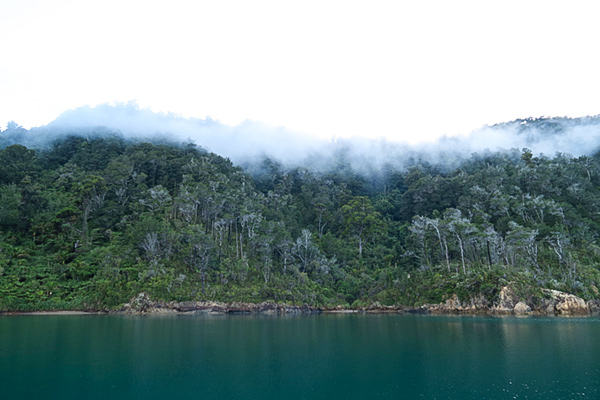
Tonight’s winds would be southerly, but less strong and we didn’t anticipate any problem at the south end of Ngawhakawhiti Bay. As soon as the clouds cleared, we moved to the south side. –Cyndi
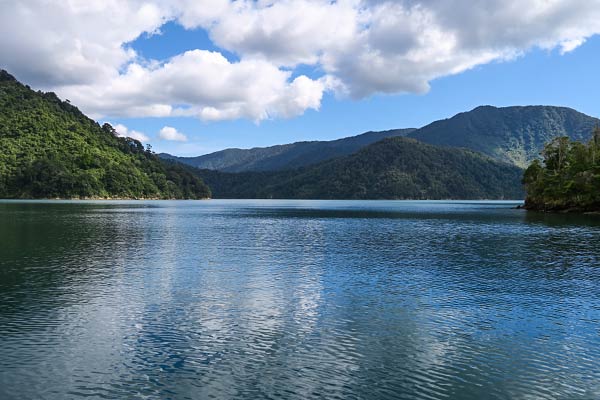
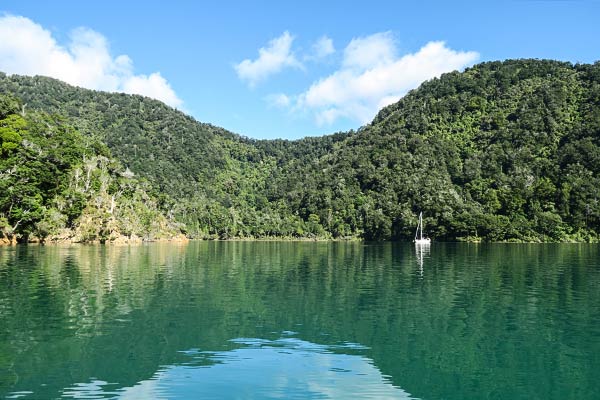
Legacy’s new spot in the south anchorage at Ngawhakawhiti Bay (Tennyson Inlet, Pelorus Sound, New Zealand)

